Our first international diving trip since Covid did not disappoint. After a 4-½ hour direct flight from LAX, we landed in Belize City, Belize, and were transported to the Aggressor IV, our 138-foot floating home for the next week. Twenty divers in ten cabins, plus eight crew members, fit comfortably on the boat, where we had room for relaxing, dealing with cameras and dive gear, eating meals in an air-conditioned dining room, and hanging out. Frigate birds occasionally flew over the deck, looking for fish.
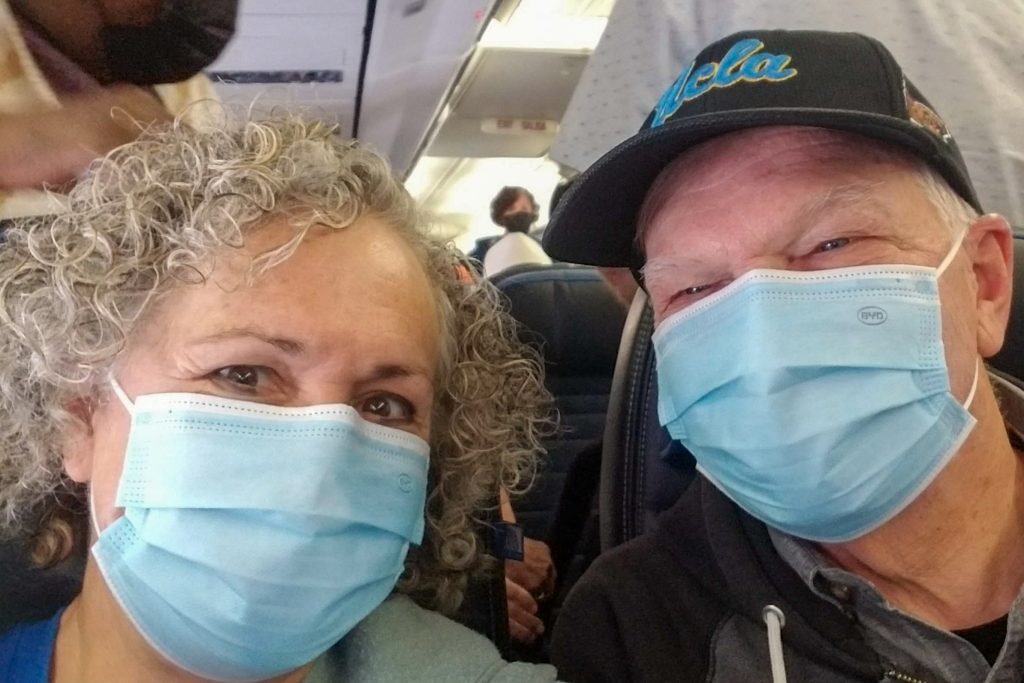
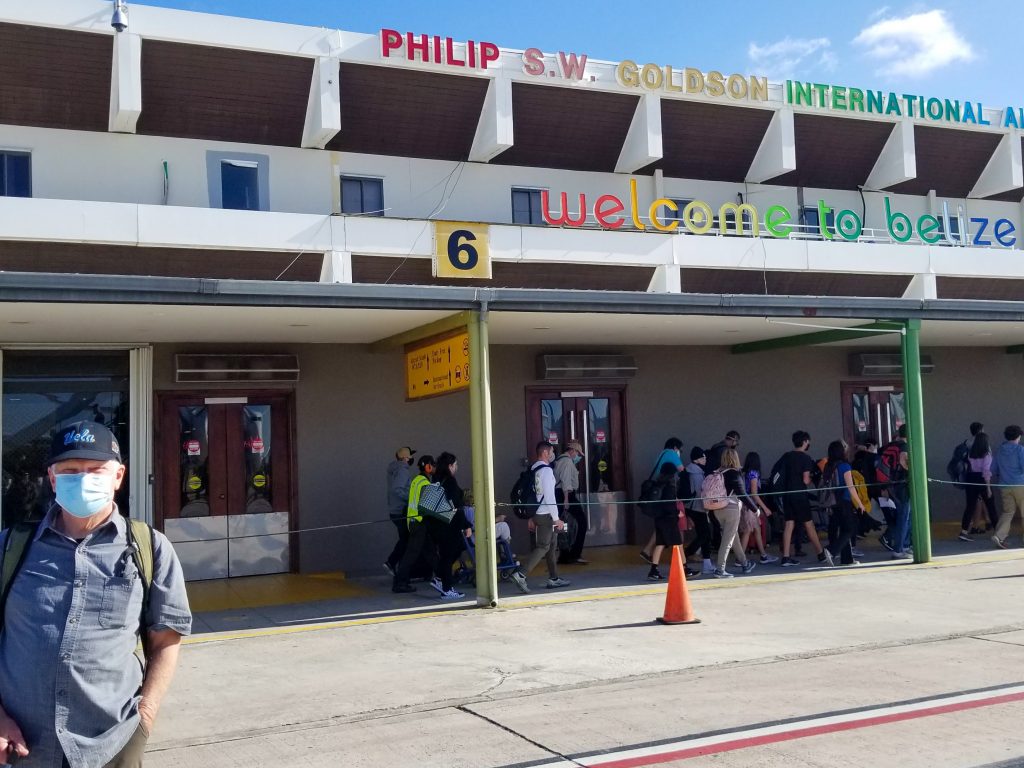
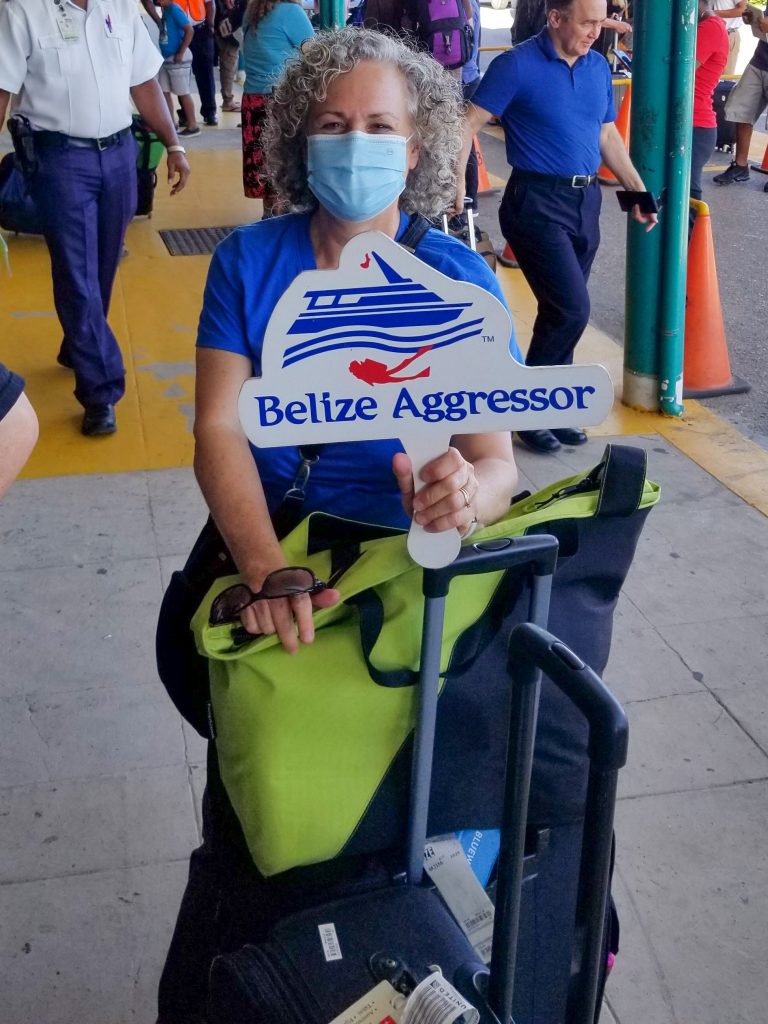
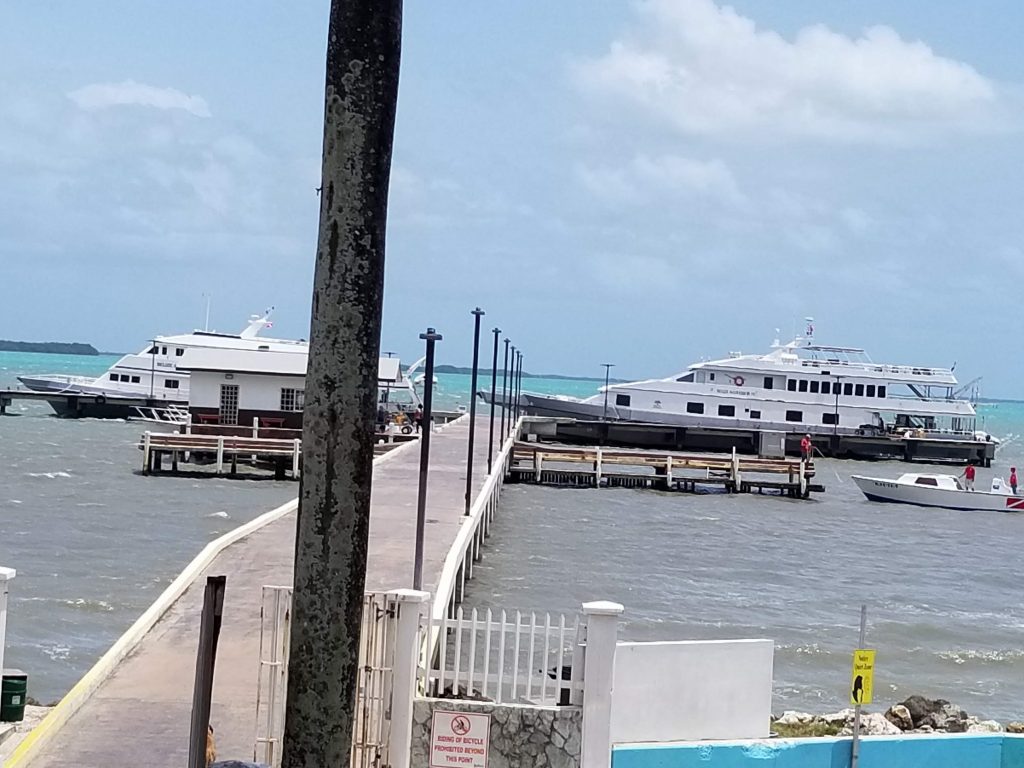
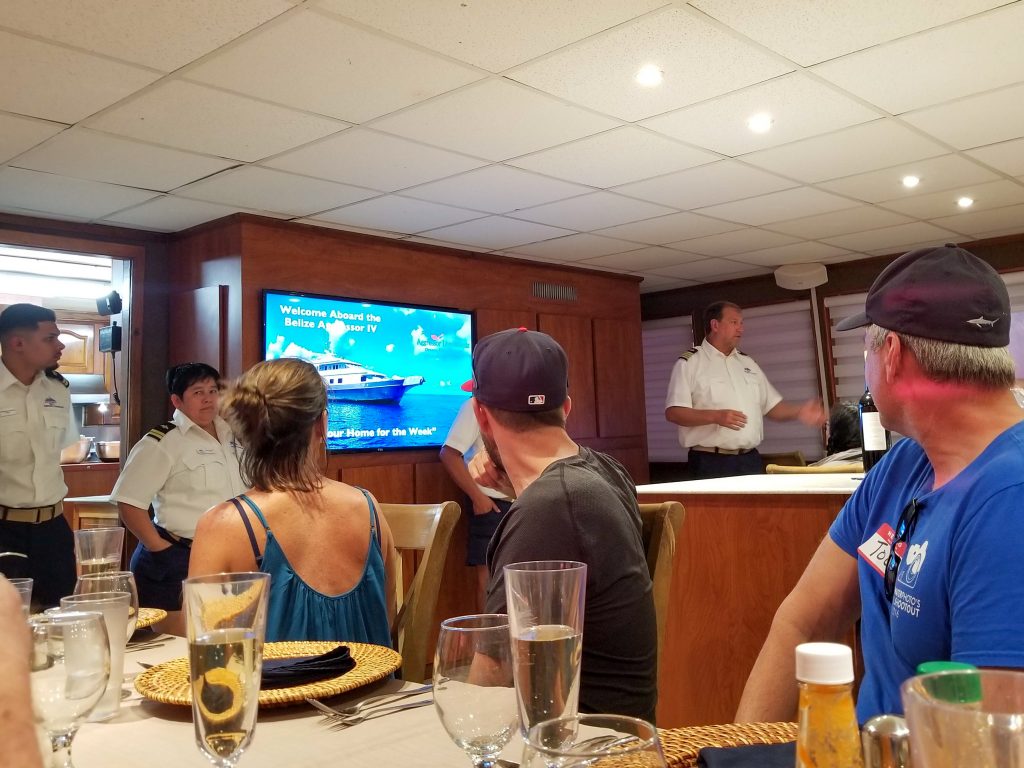
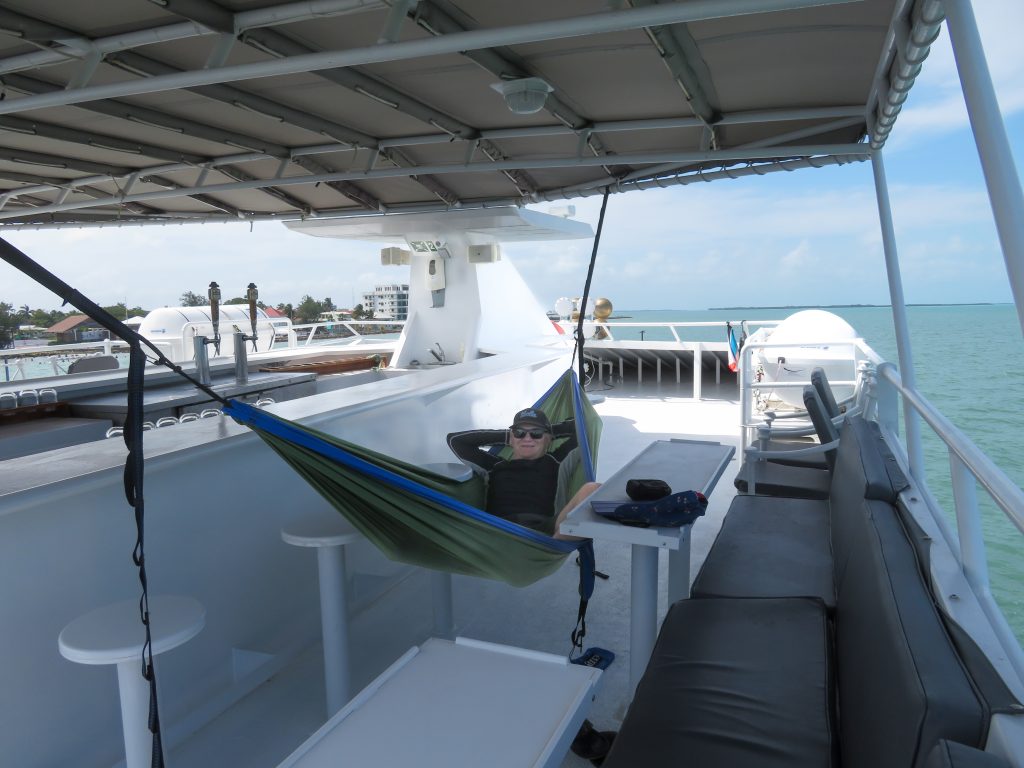
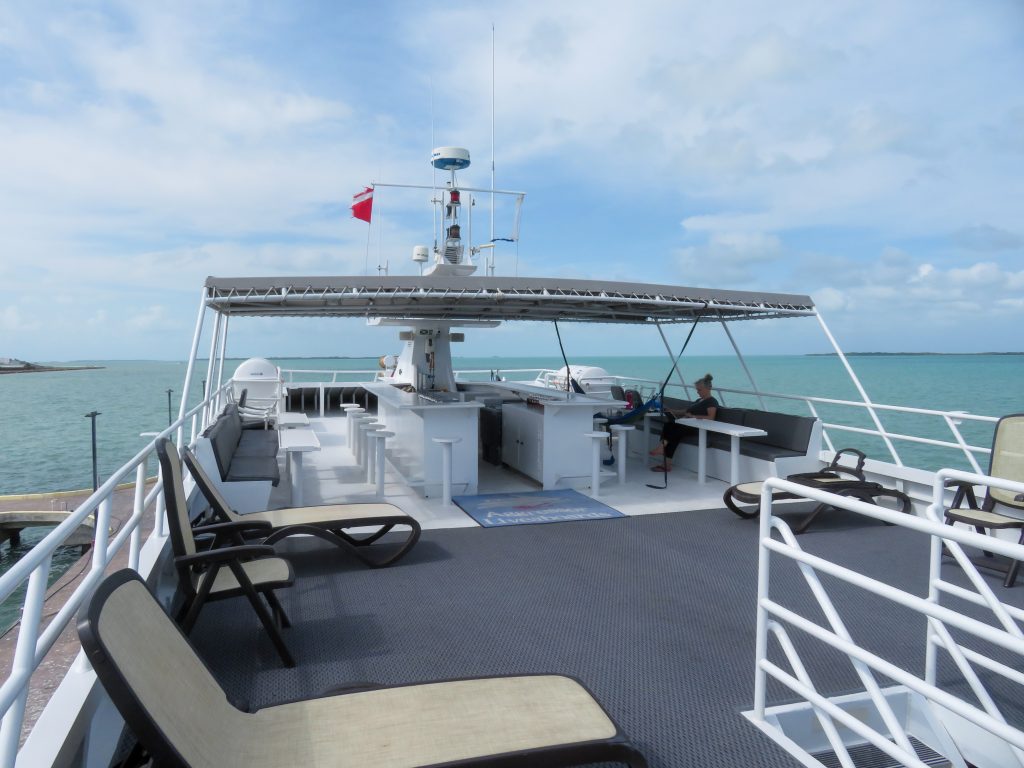
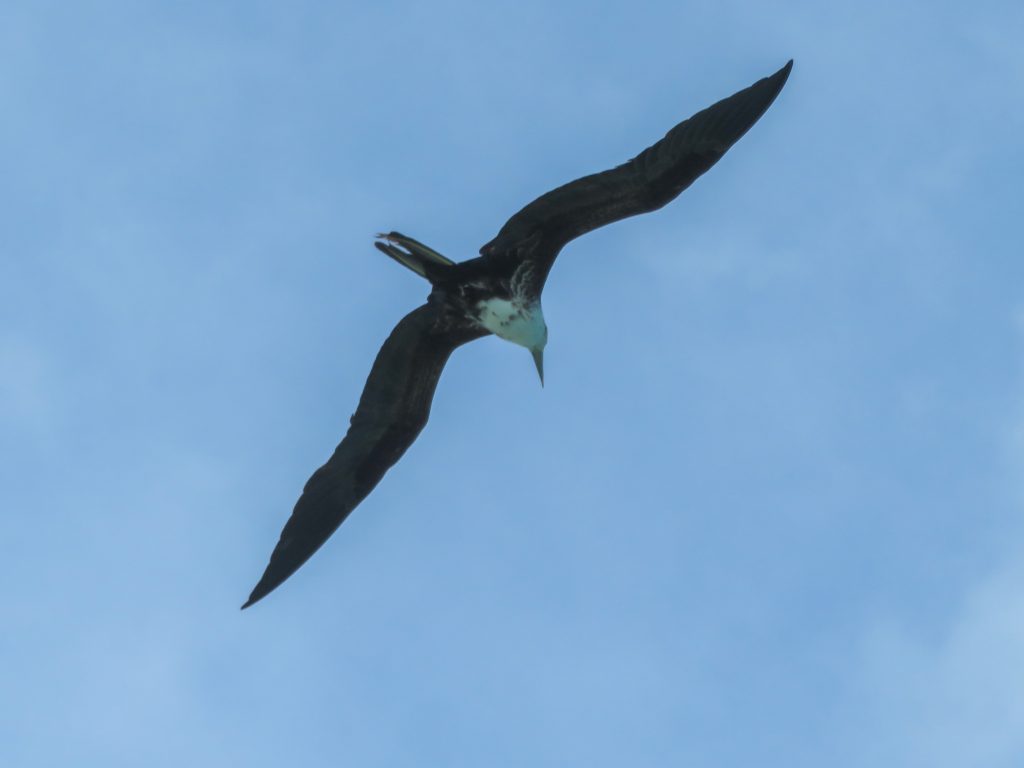
Belize is a Caribbean country in northeast Central America, bordering Mexico’s Yucatan Peninsula and Guatemala. One of the regions of Mayan civilization, Belize still contains many Mayan ruins, which we explored at the end of our trip (see pictures below). It was formerly called British Honduras, but became independent and changed its name to Belize in 1981. It’s an easy country for Americans to travel to, since English is the official language, and the Belizean dollar is linked to the U.S. dollar (plus the country is close to the U.S.).
Eat, sleep, dive is the motto when you’re on a dive boat, and that’s what we did.
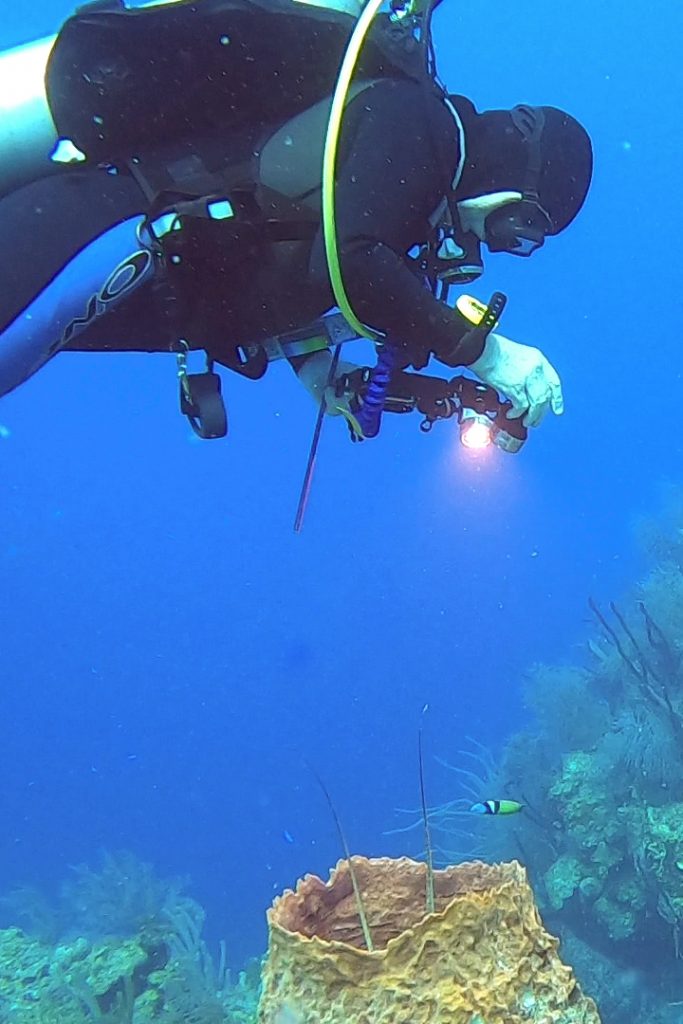
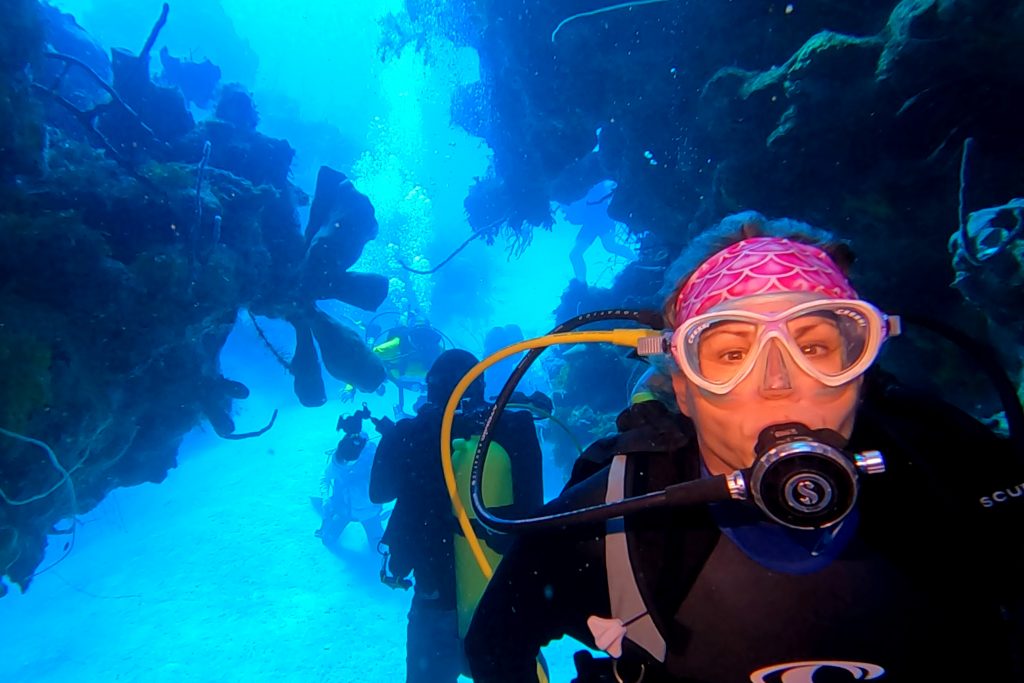
Hank and I each completed 18 dives during the week, though some of our dive buddies earned Iron Diver status by completing all 23 dives that were offered. We were fortunate to have Aggressor dive guides–Daniel, John, Simon, and Shea–plus instruction from our underwater photo and video experts, Mike Chiado and Todd Kortte, guiding us before, during, and after our dives to get the most out of our photos and videos. We still have a long way to go, but Todd and Mike were very helpful in taking us to the next level of underwater photos/videos! Bluewater Photo and Bluewater Dive Travel provide great photo/video experts on their guided trips.
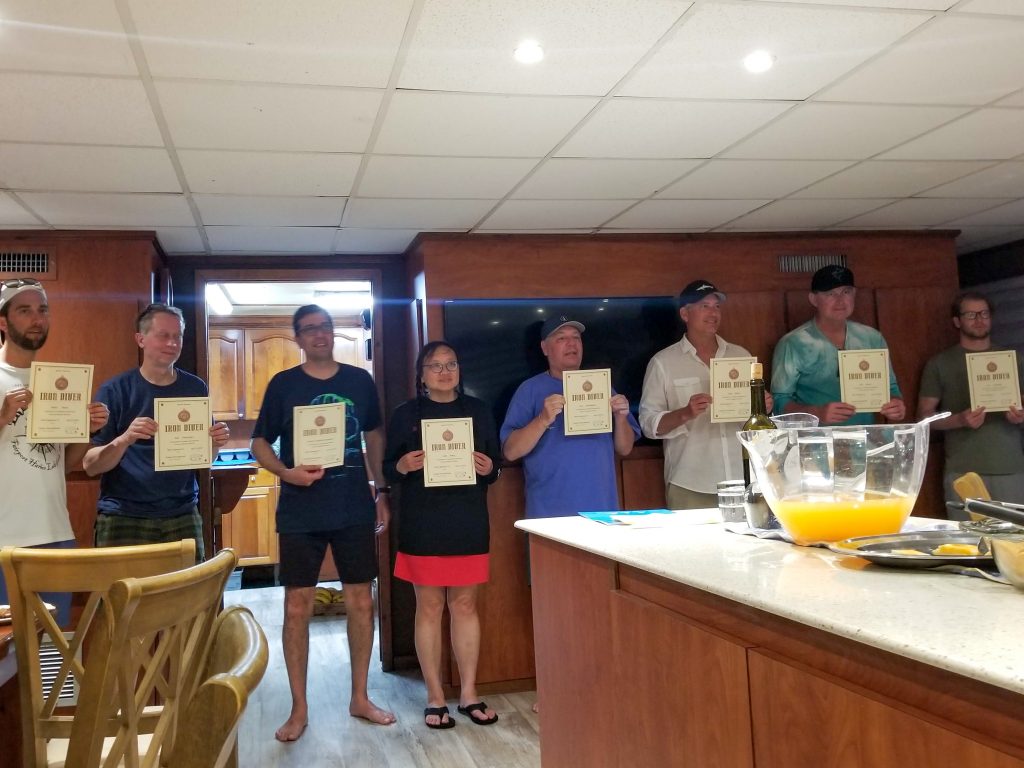
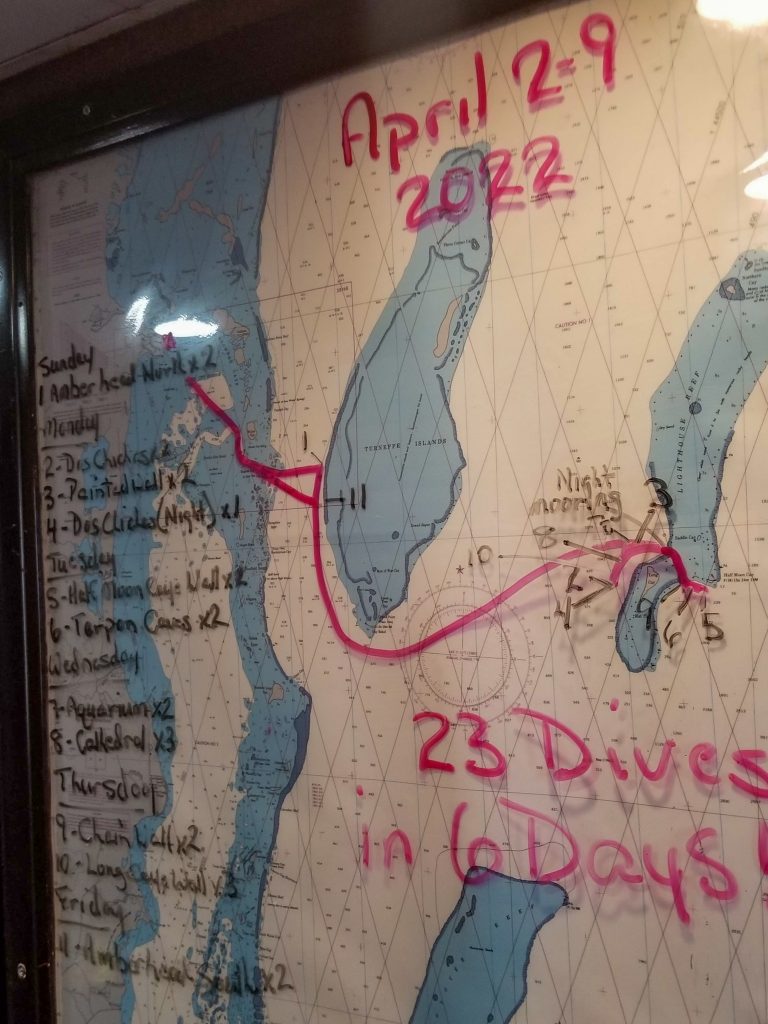
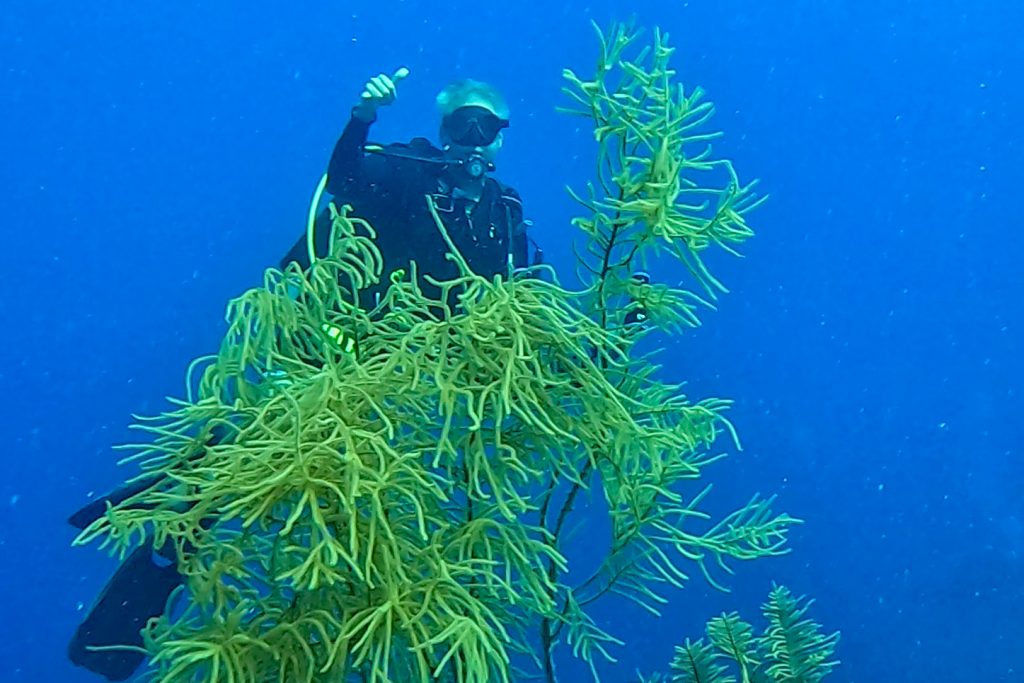
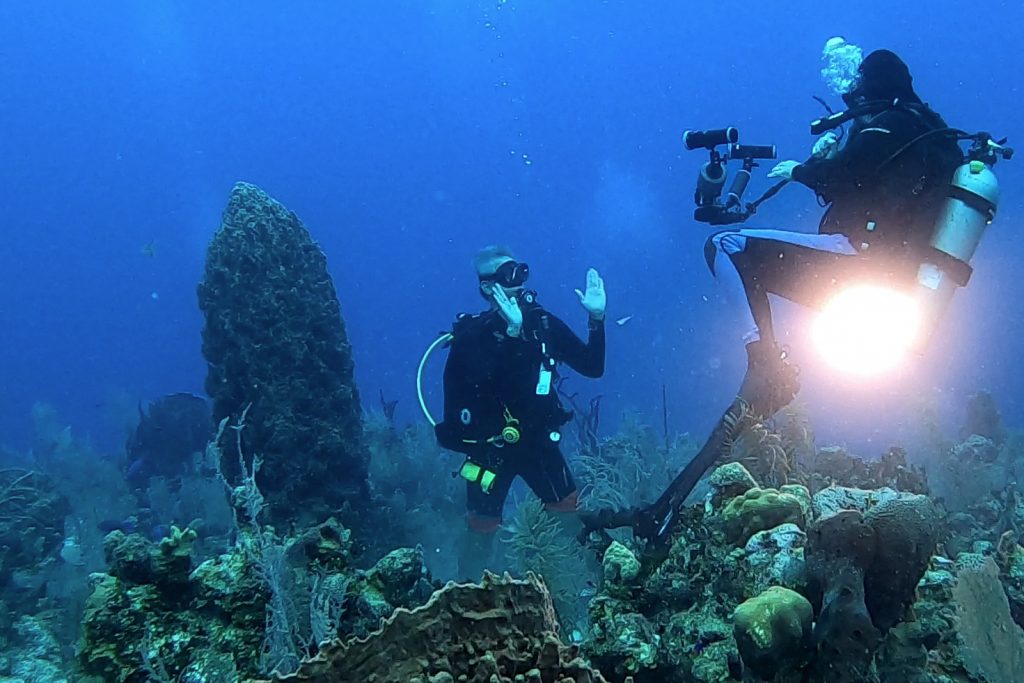
Why dive in Belize? Its reef is part of the Mesoamerican Reef, the world’s second largest reef after Australia’s Great Barrier Reef. The Belizean section of the reef has over 150 miles of barrier reefs along its coastline, and we visited just a fraction of this area, spending our time exploring dive sites on Turneffe Reef and Lighthouse Reef.
Though unable to dive the Blue Hole (a 412-foot-deep collapsed cave containing stalactites and stalagmites with a 1000-foot wide circle visible from space) due to very windy and rough conditions, we did not feel deprived because we were able to dive among healthy reefs, enjoying an abundance of sharks, rays, turtles, moray eels, and many other Caribbean fish species.
Here are our not-very-sophisticated categories of highlights from our dives (and be sure to click on the link to watch Hank’s 10-minute iMovie). Some species would definitely fit in more than one category. (NOTE: We shot only underwater video, so all the photos below are stills that we grabbed from our GoPro footage. They aren’t as clear as Mike’s photos, nor is the video as skilled as Todd’s, but we’re learning.)
BIG AND SCARY (or not)
- Great Barracudas and Tarpons
- Reef Sharks and Nurse Sharks
- Green Sea Turtles and Loggerhead Turtles
- Southern Stingrays, Spotted Eagle Rays, a Whiptail Stingray
- Green Moray Eels
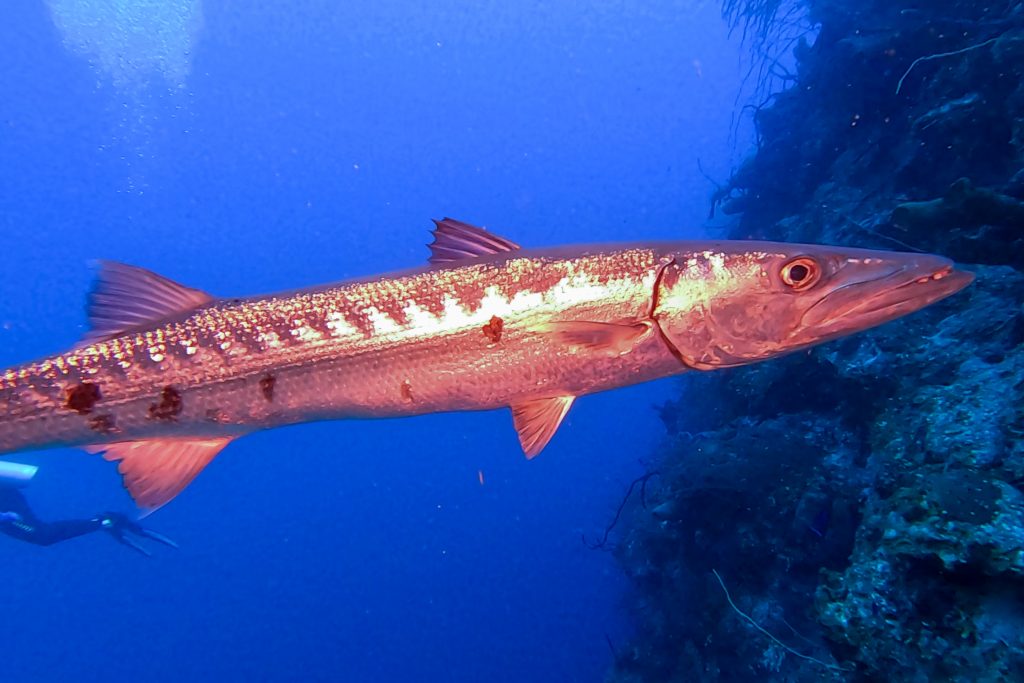
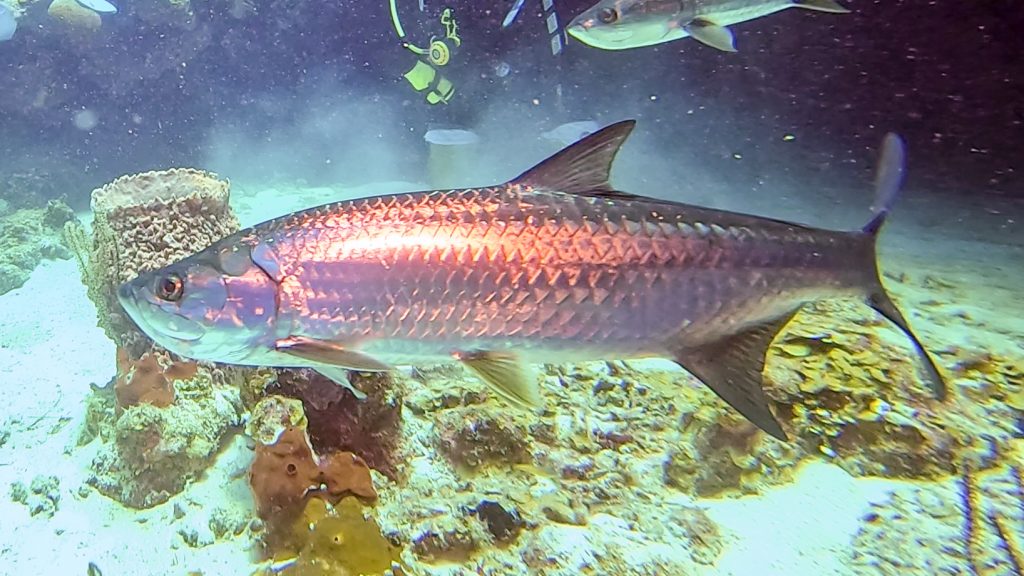
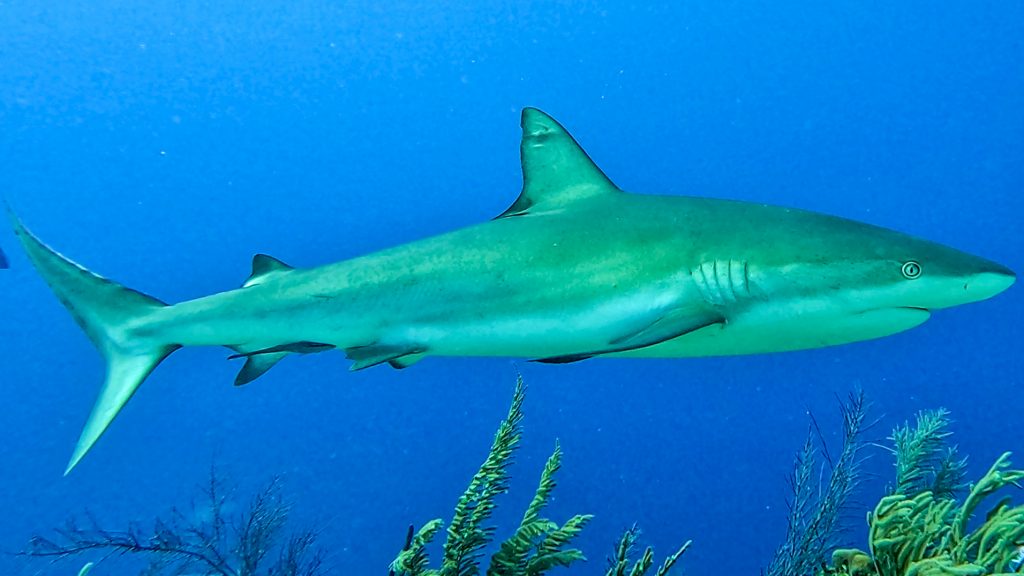
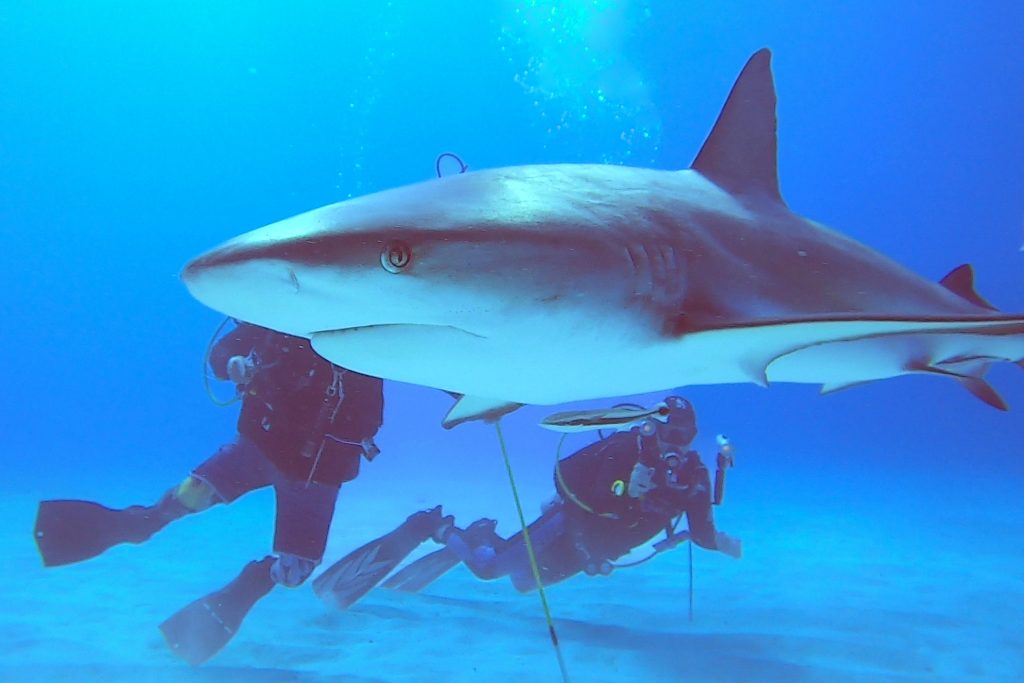
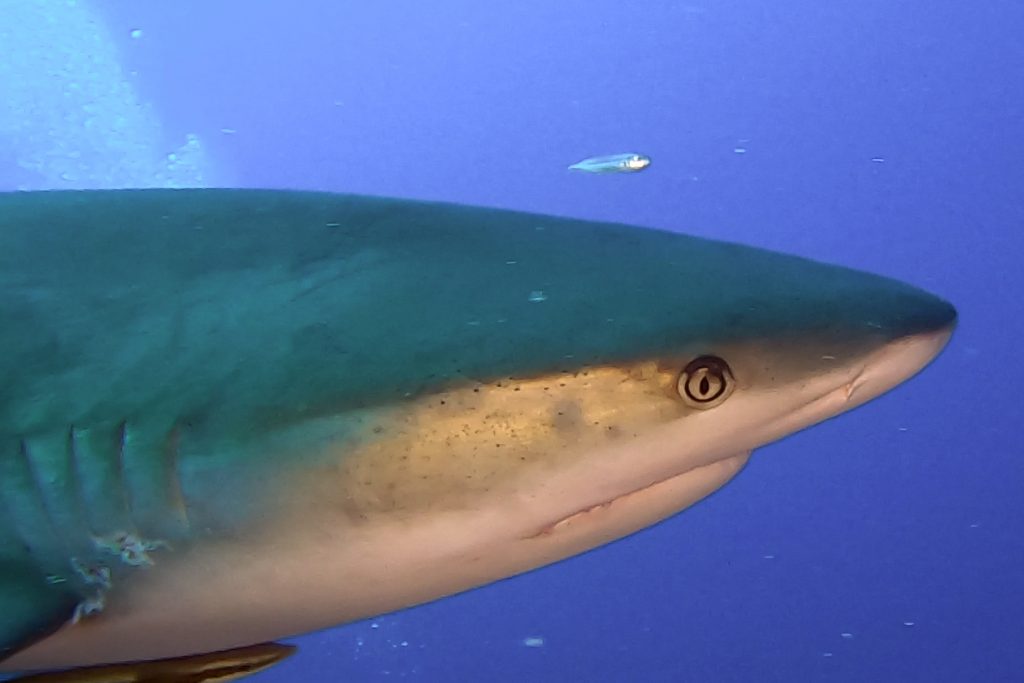
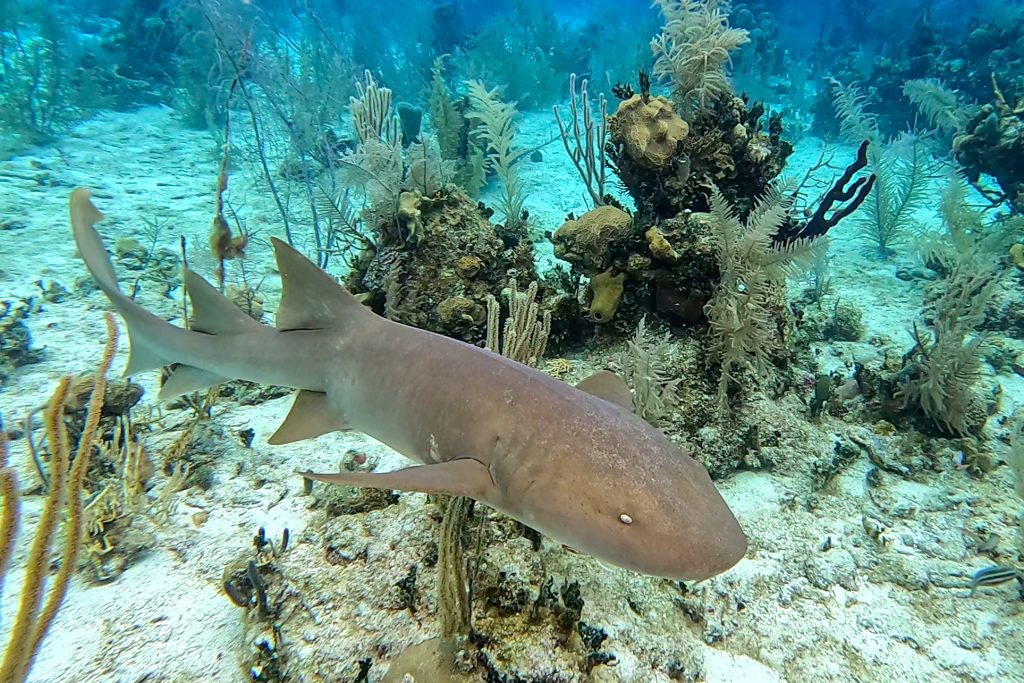
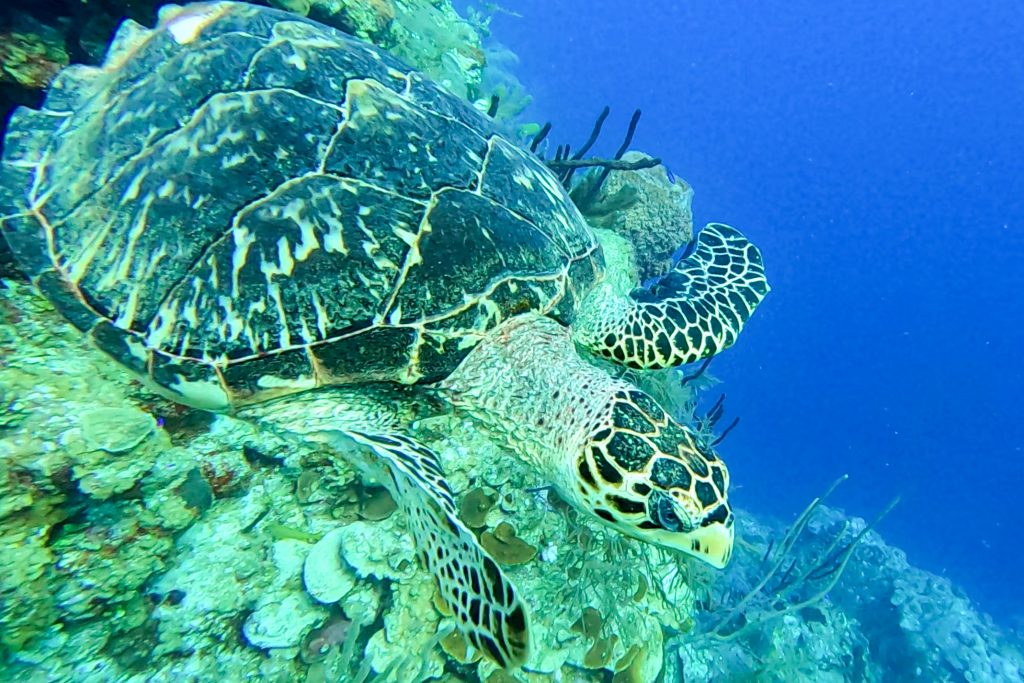
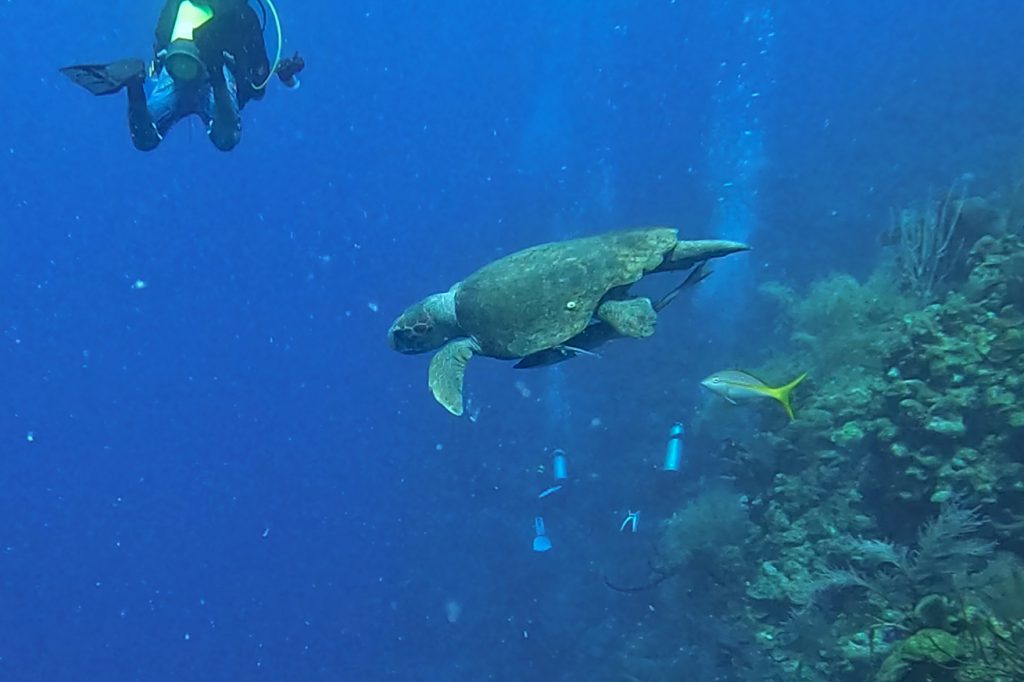
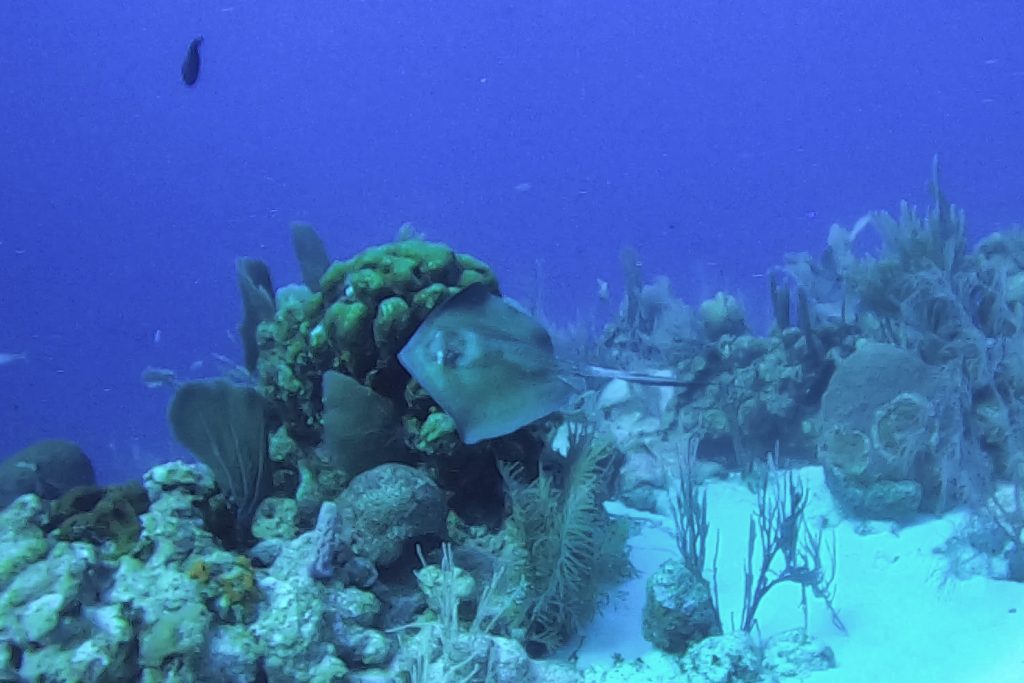
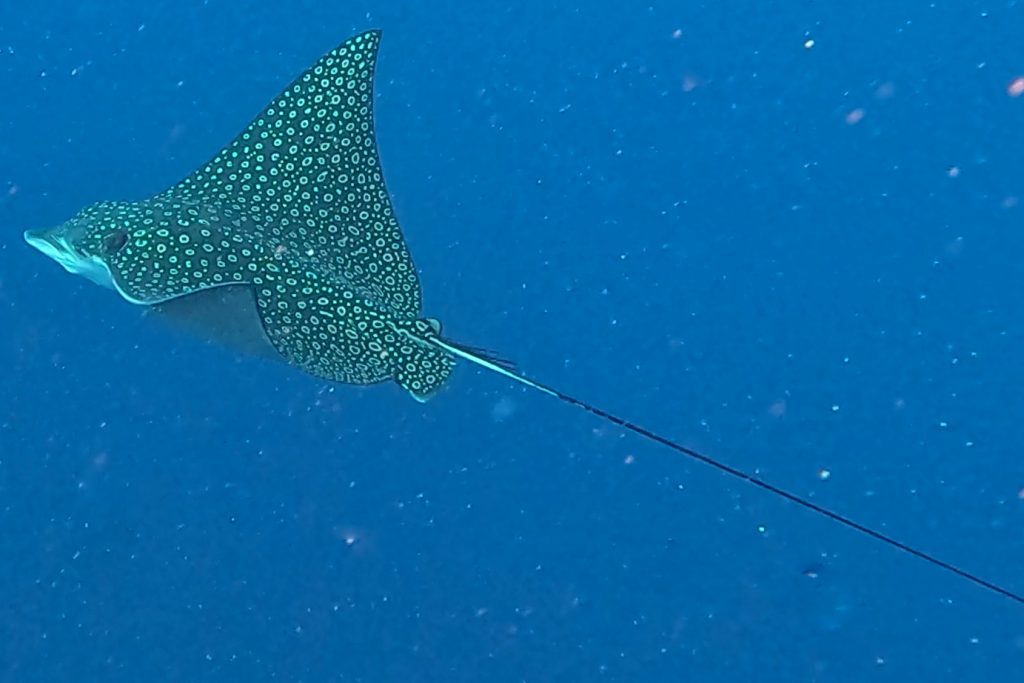
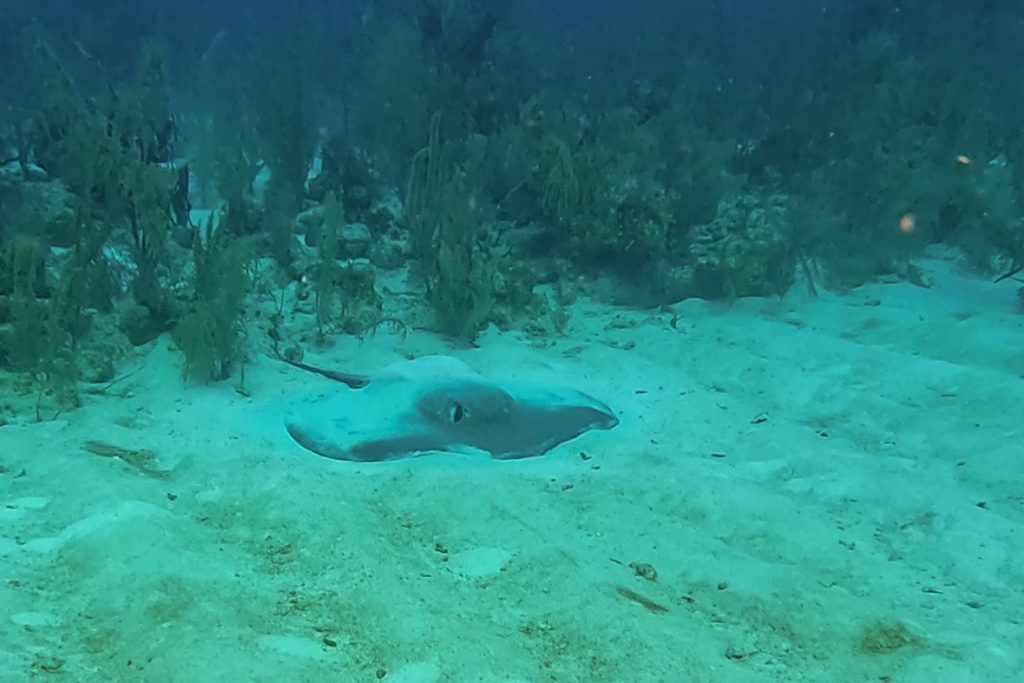
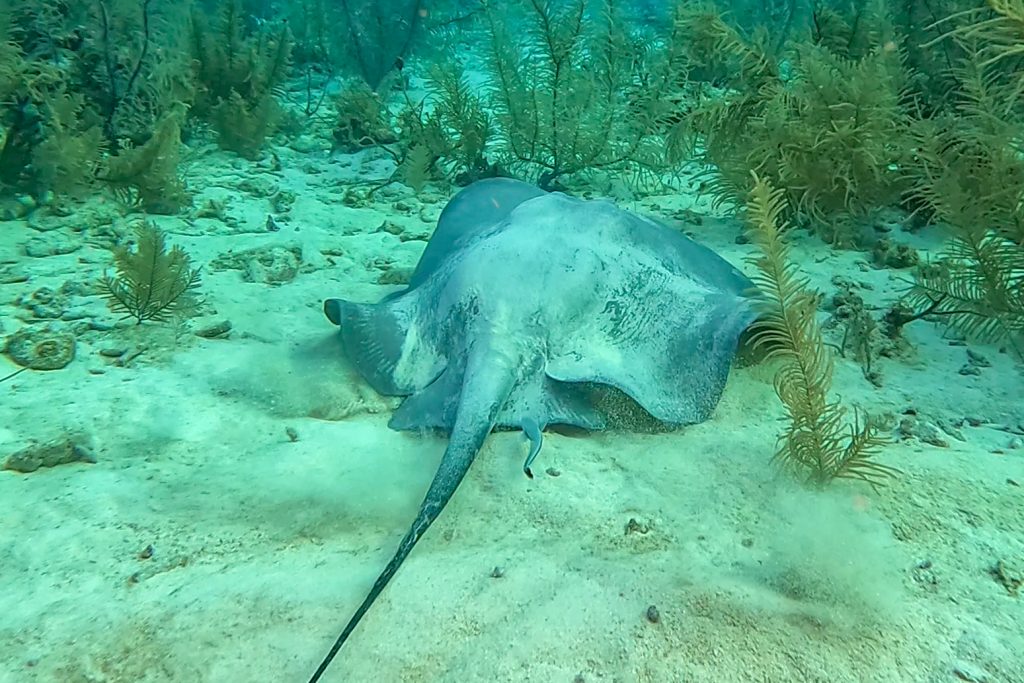
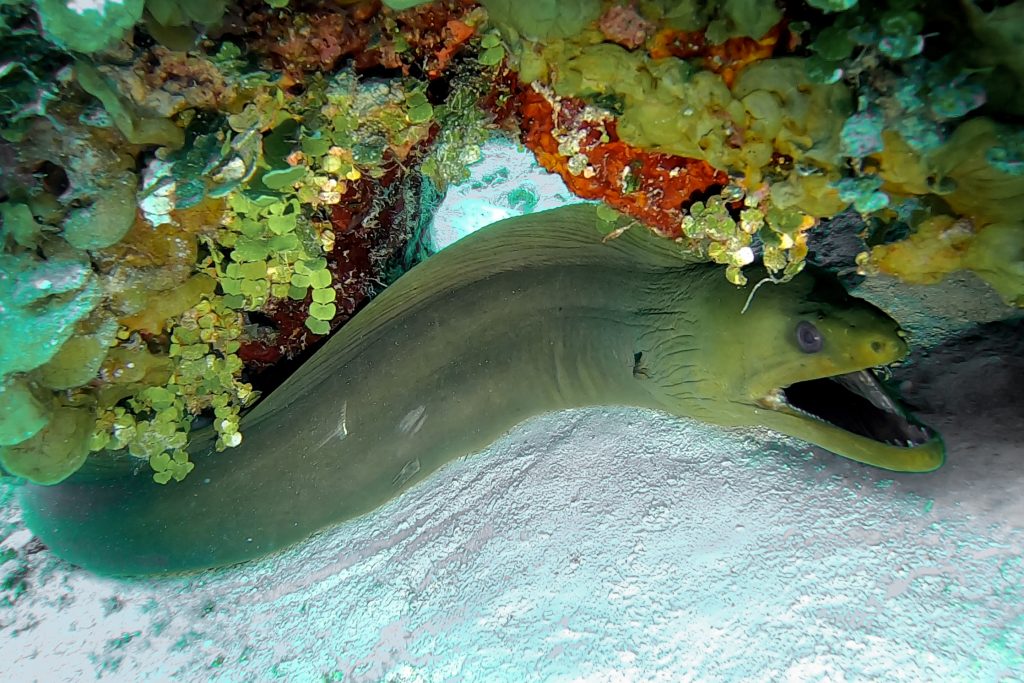
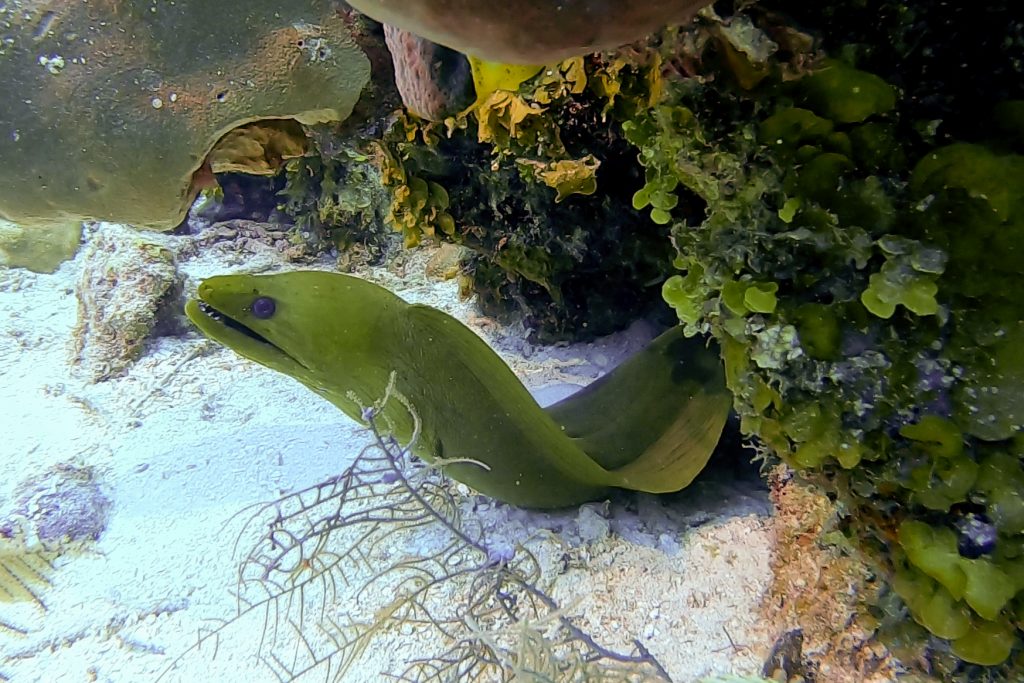
COLORFUL
• Angelfish—French, Queen, Gray, and Rock Beauty
• Butterflyfish—Banded, Foureye, Spotfin
• Indigo Hamlet (a new species for us!), Blackcap Basslet, Creole Wrasse (initial phase)
• Parrotfish-Stoplight, Redband, and Glasseye Snapper
• Queen Triggerfish, Rough Fileclam
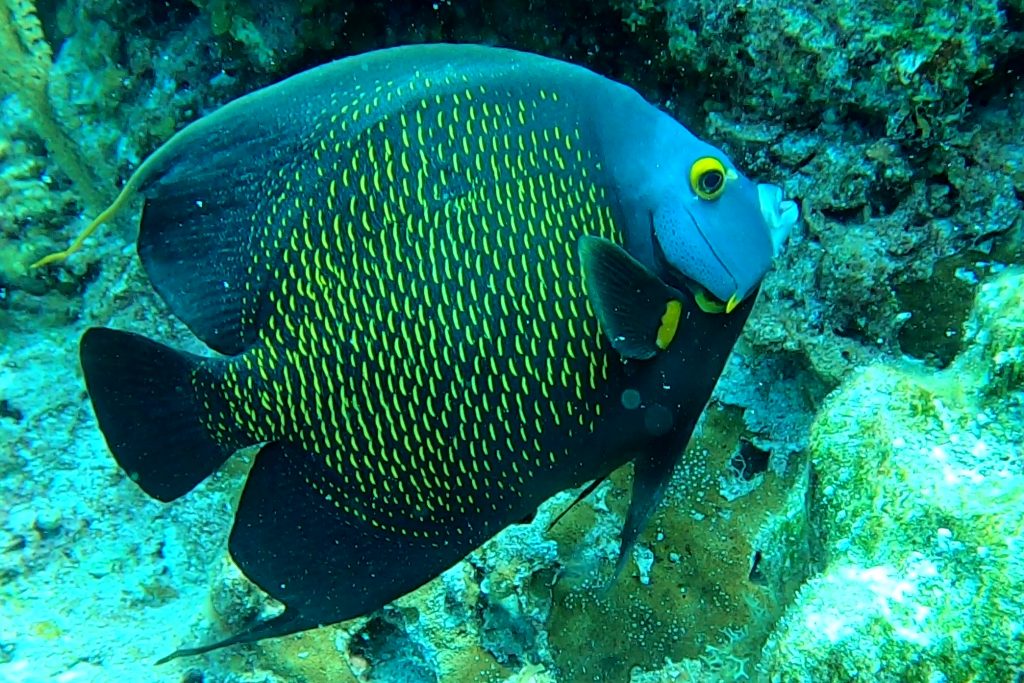
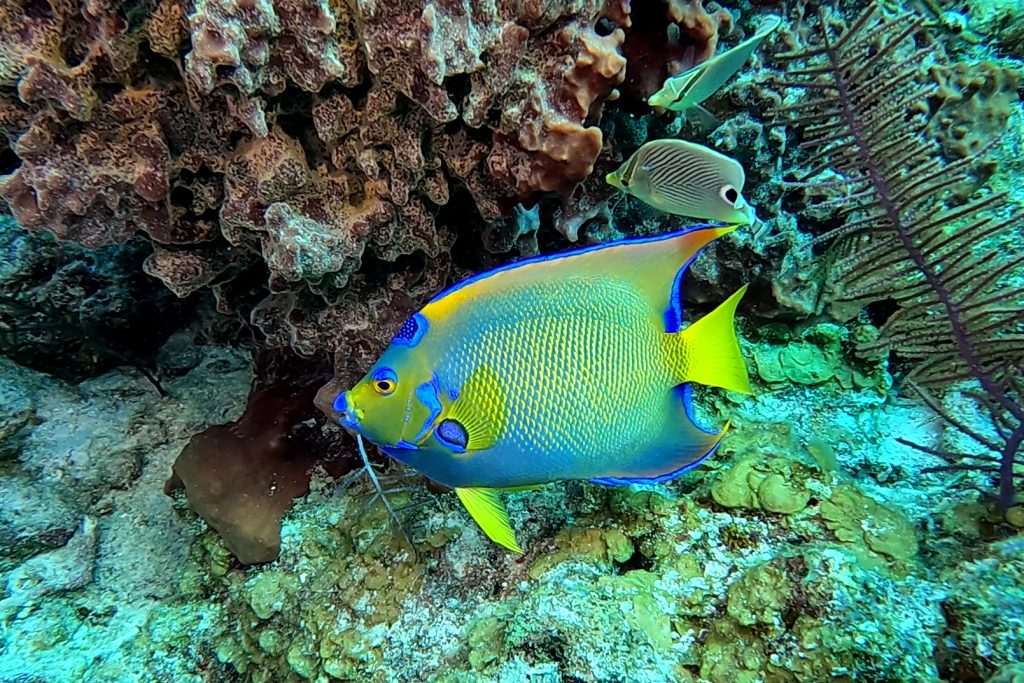
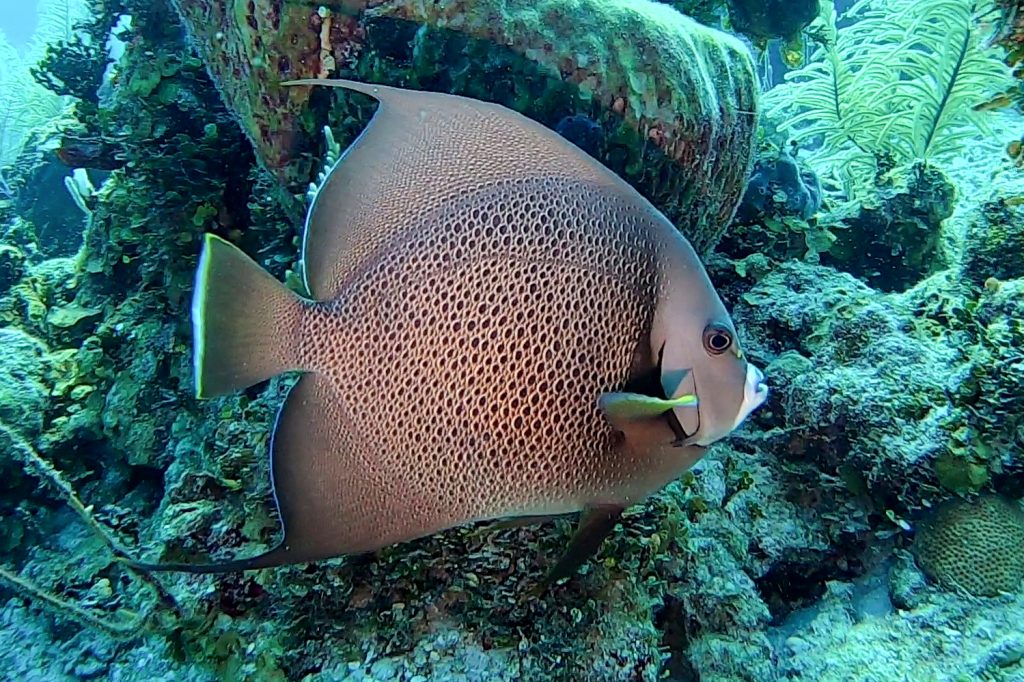
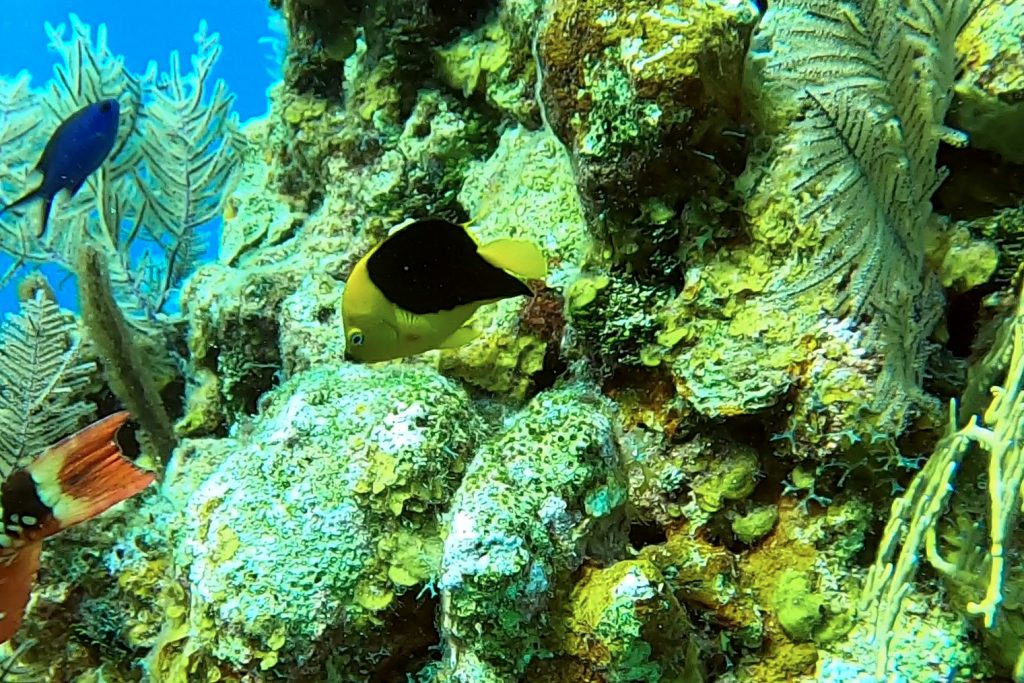
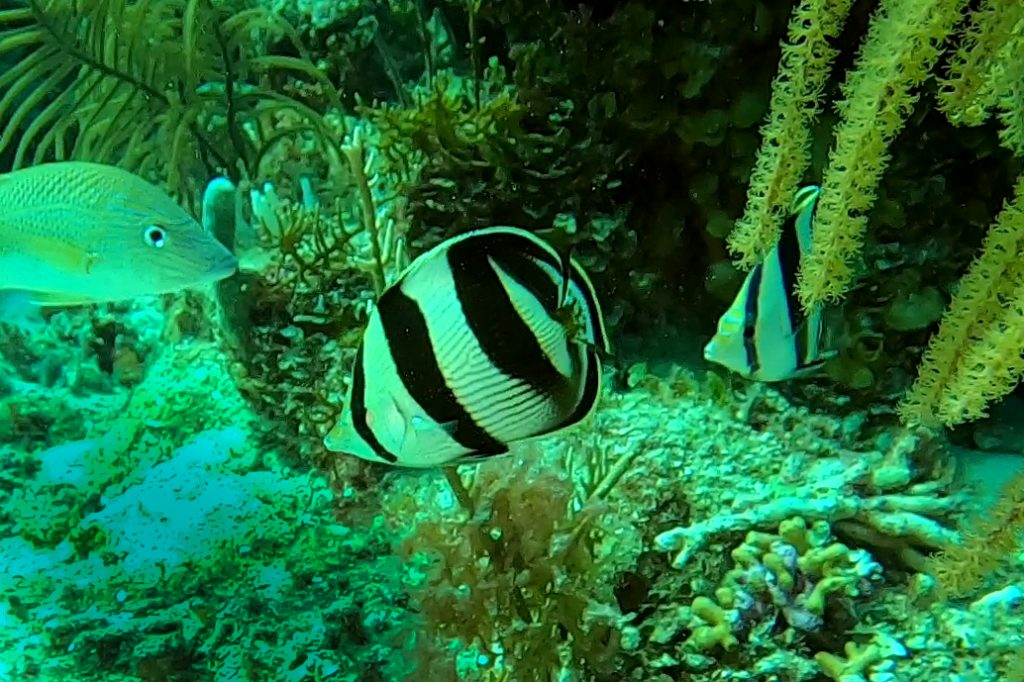
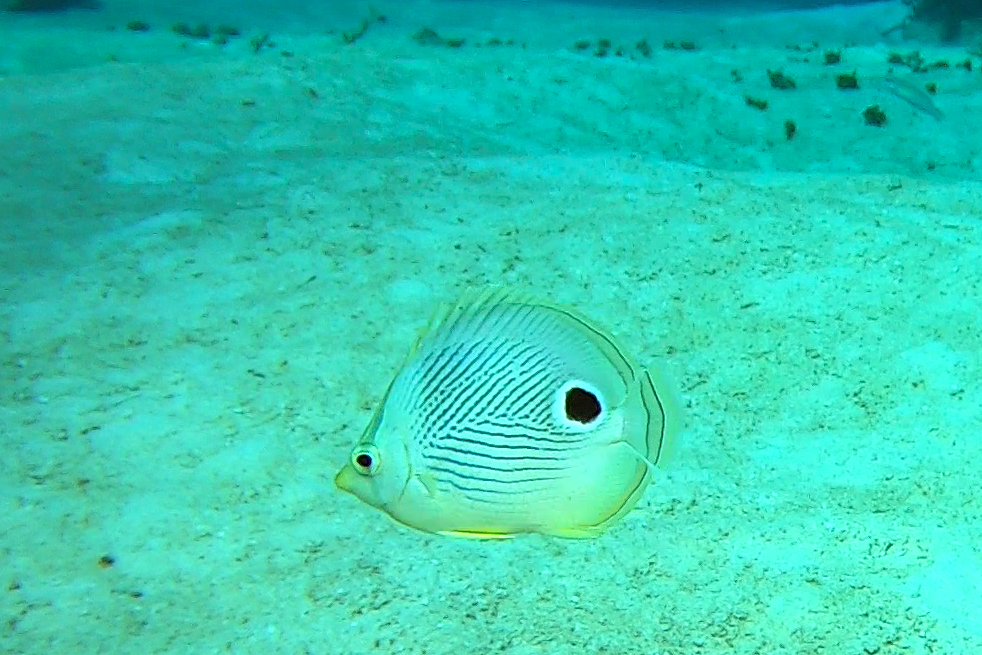
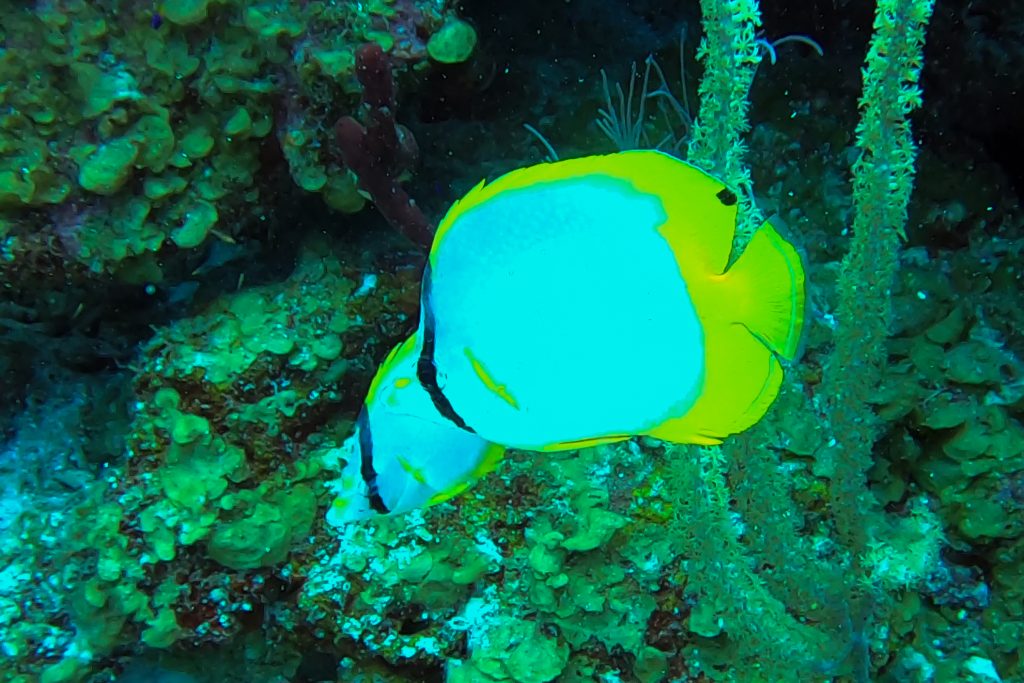
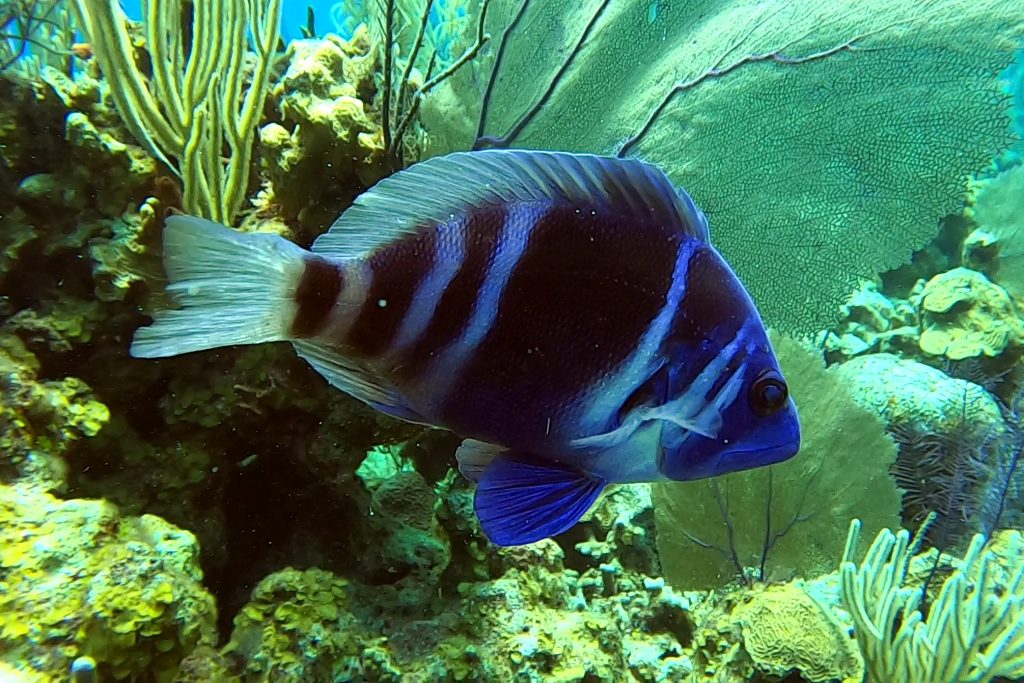
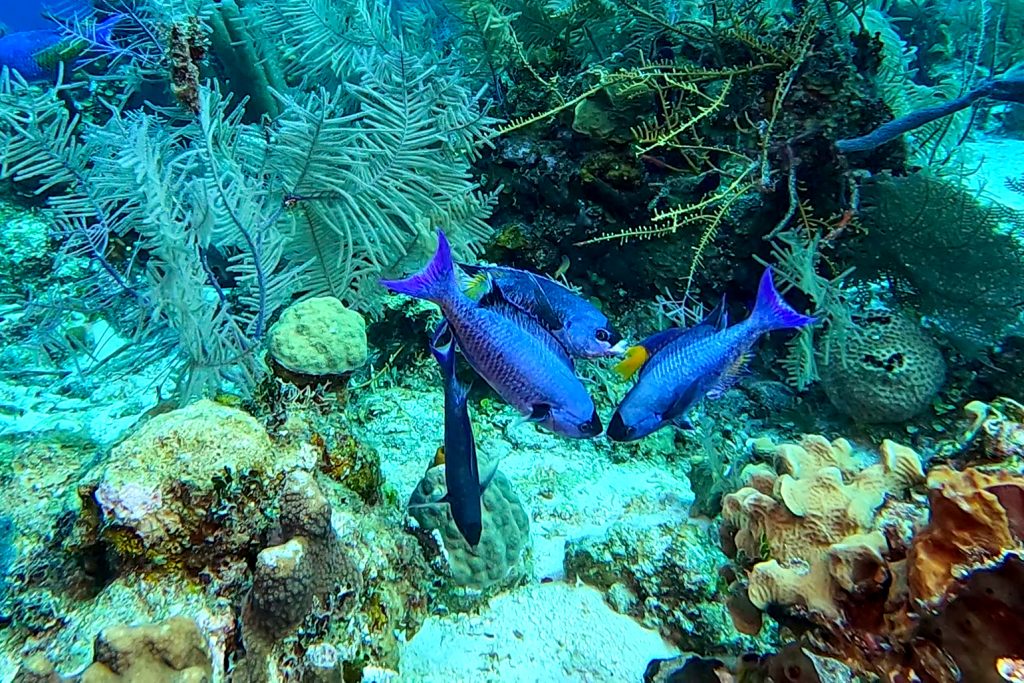
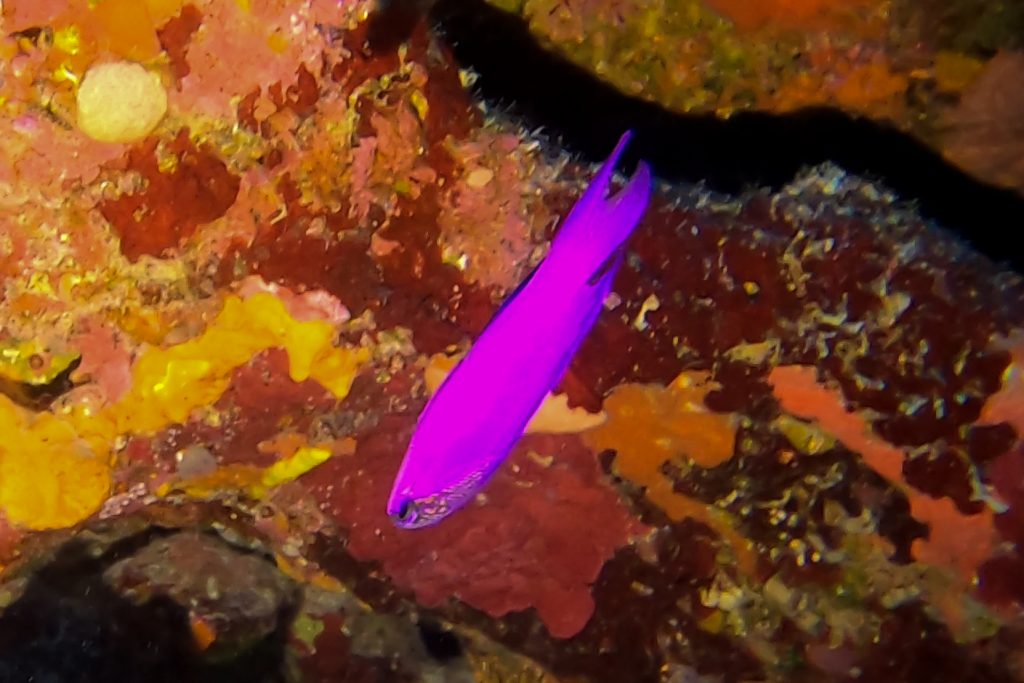
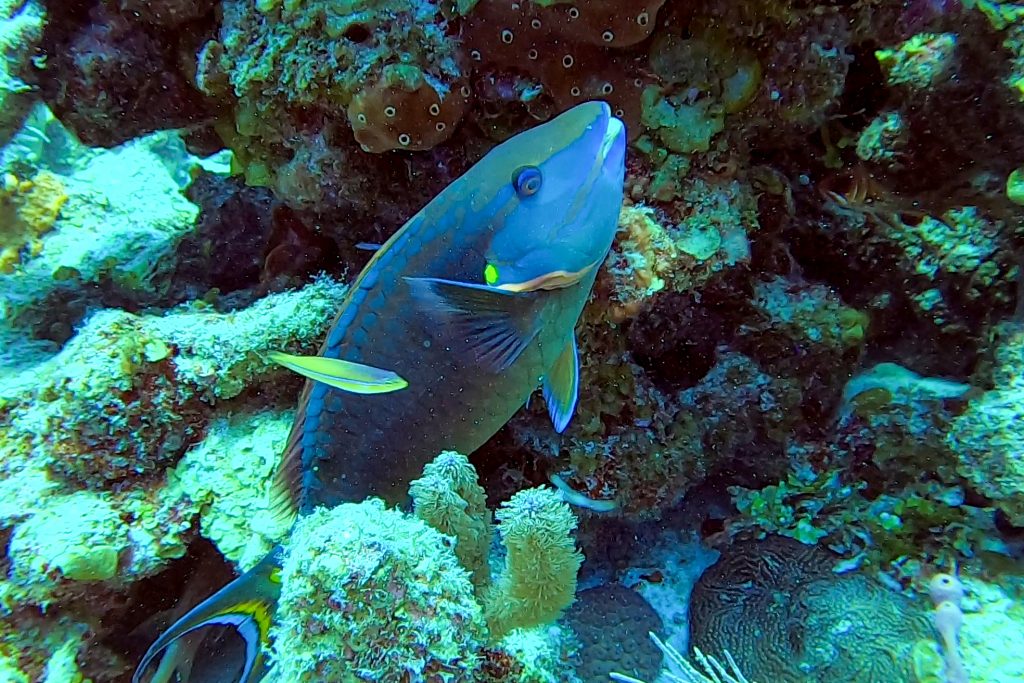
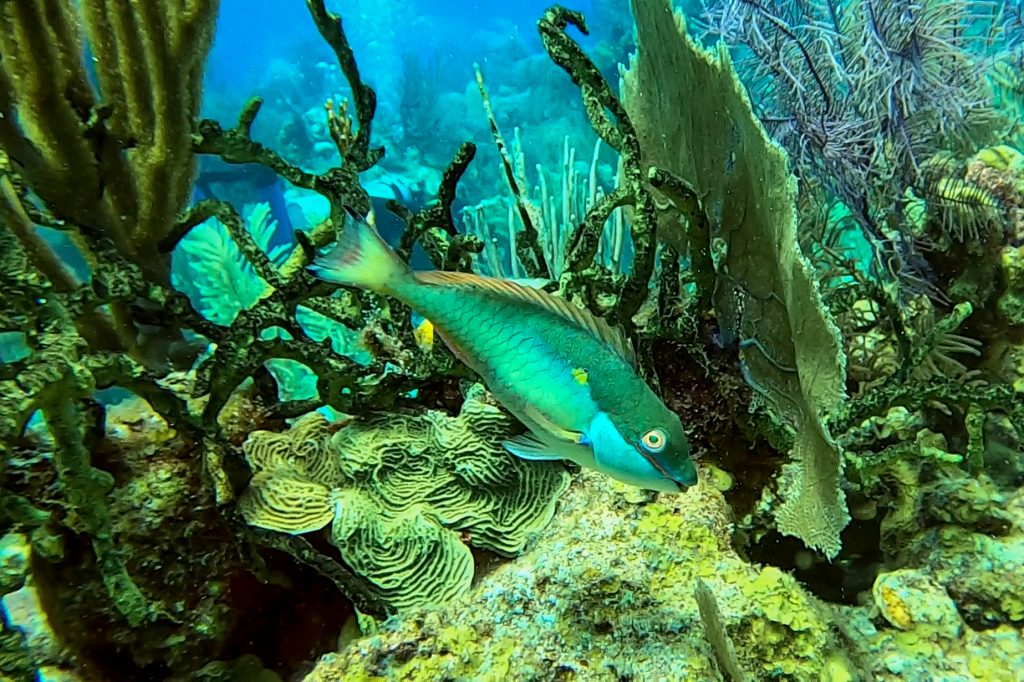
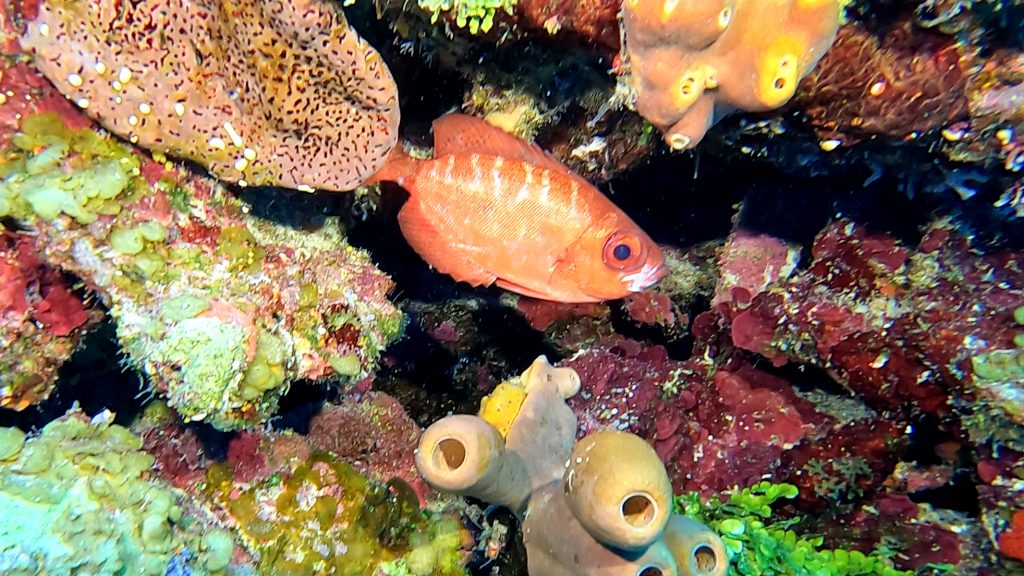
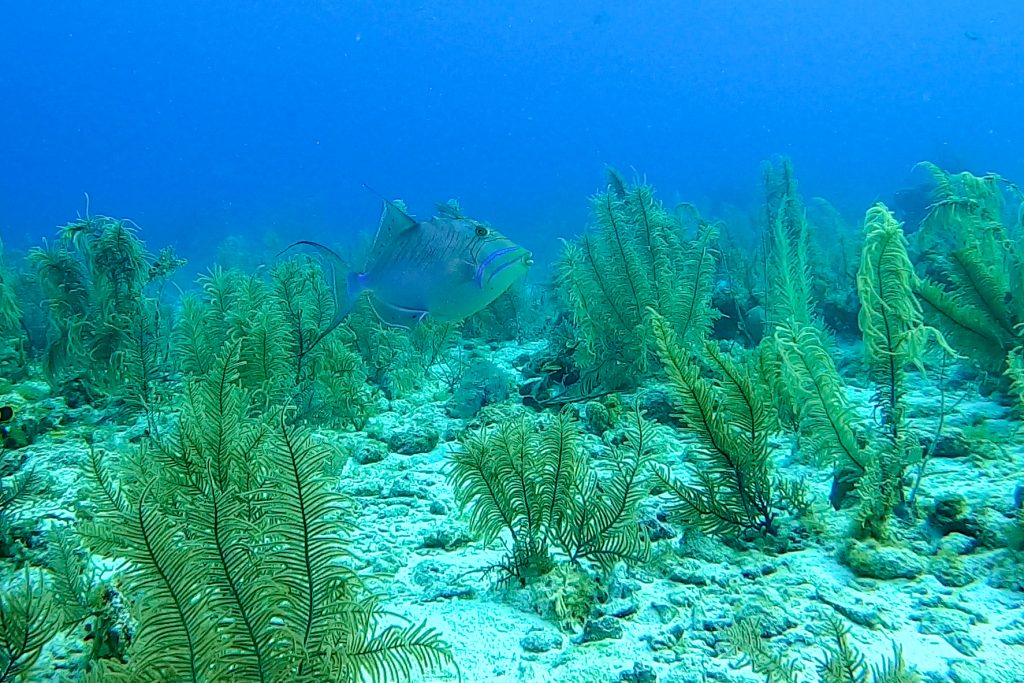
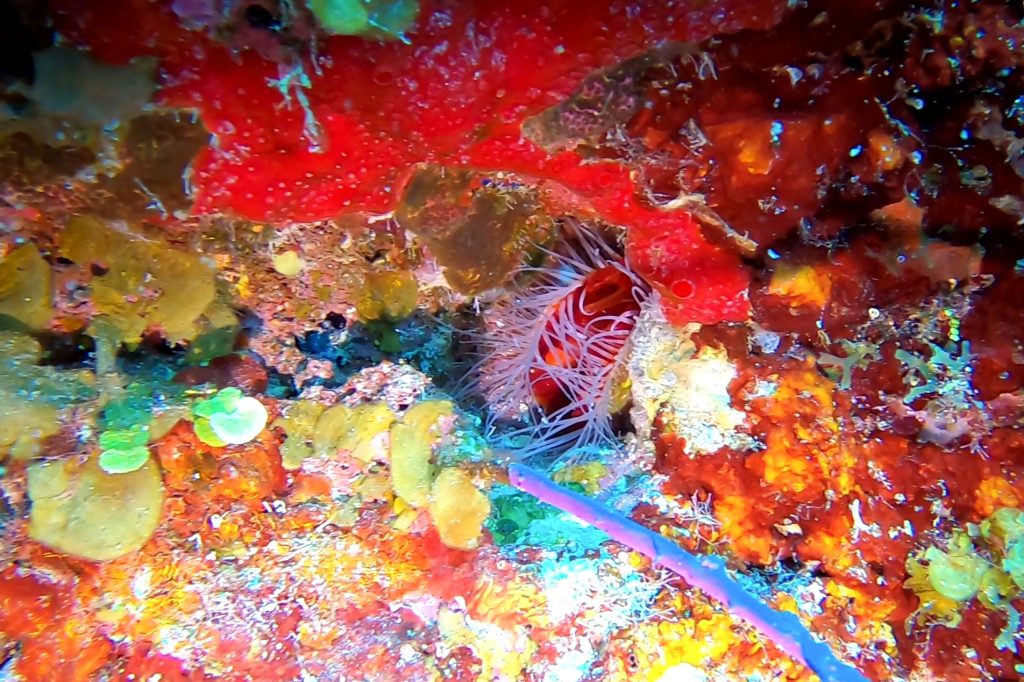
WEIRD NAMES
• Porgy and Porkfish
• Schoolmasters and Squirrelfish
• Juvenile Spotted Drum and Flamingo Tongue Cowry
• Feather Duster Worms
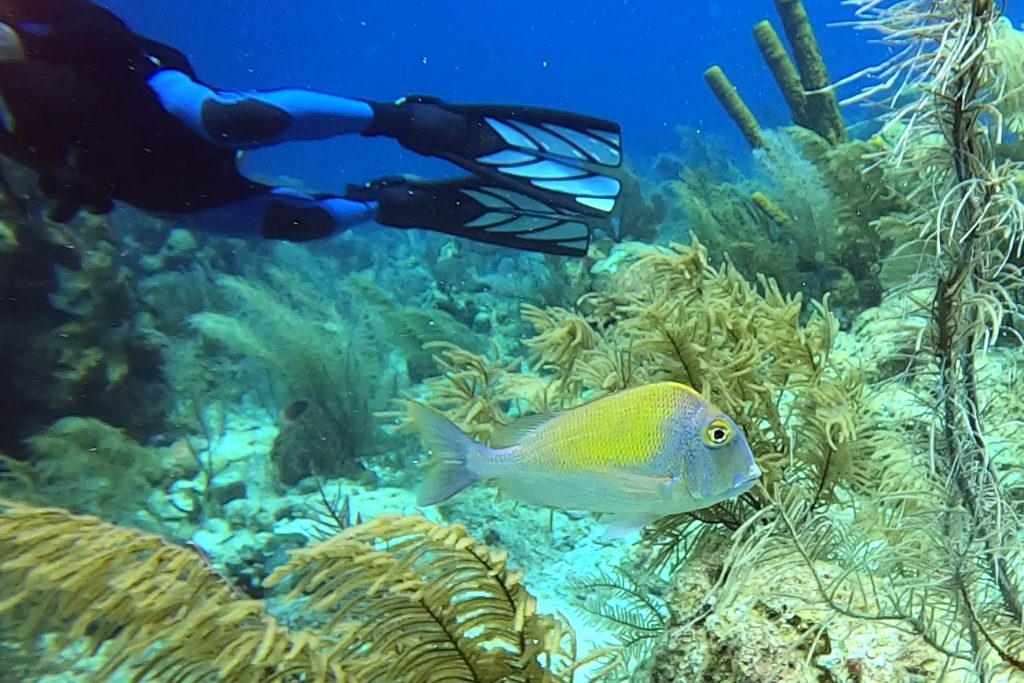
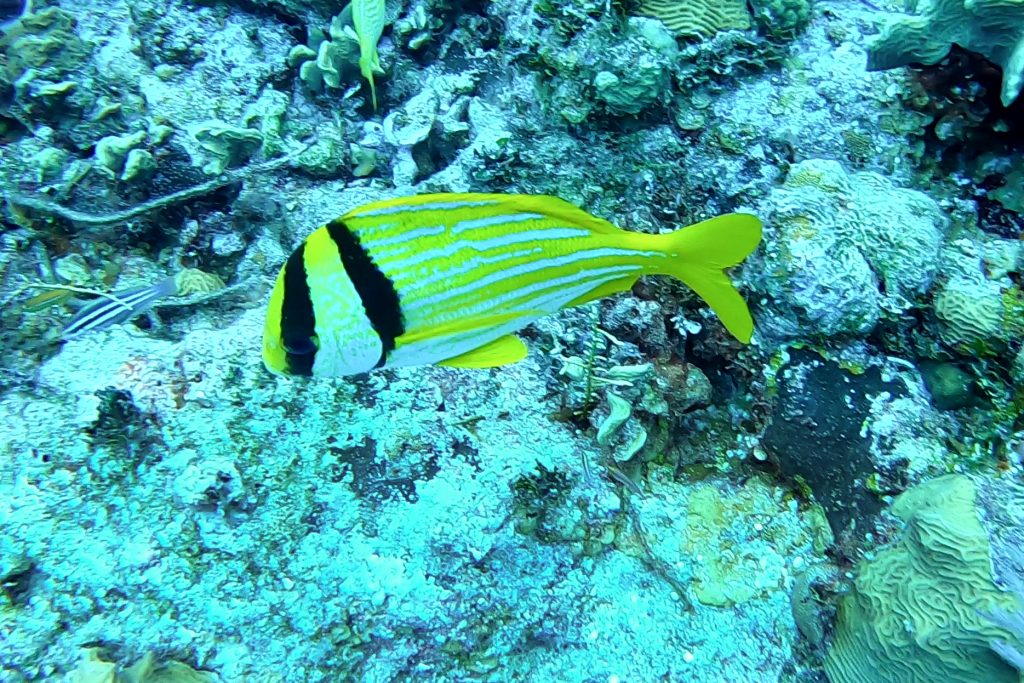
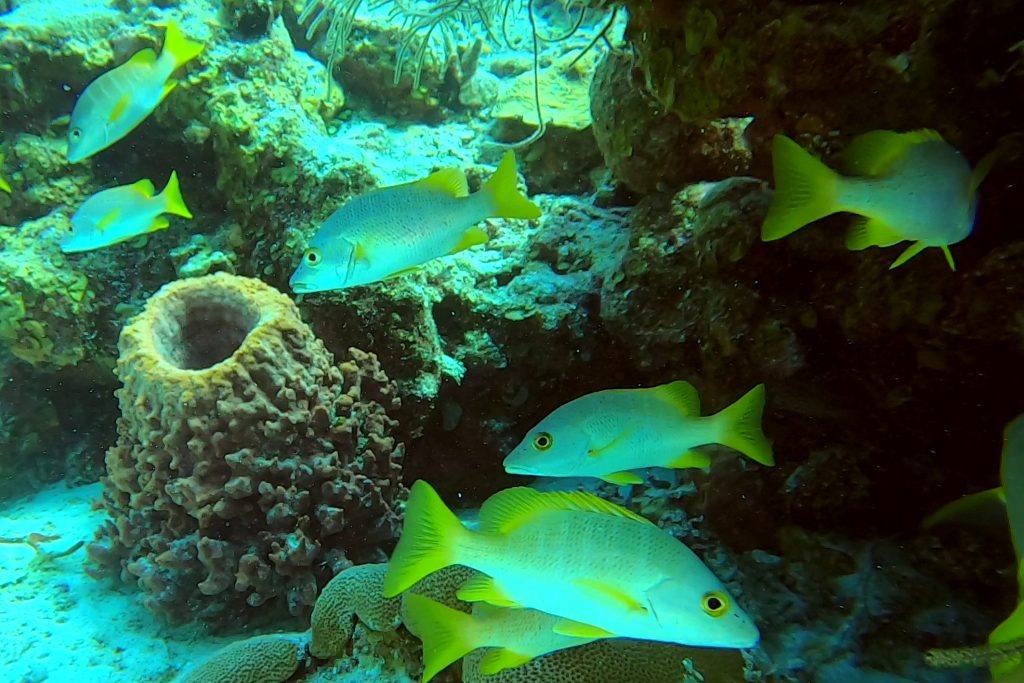
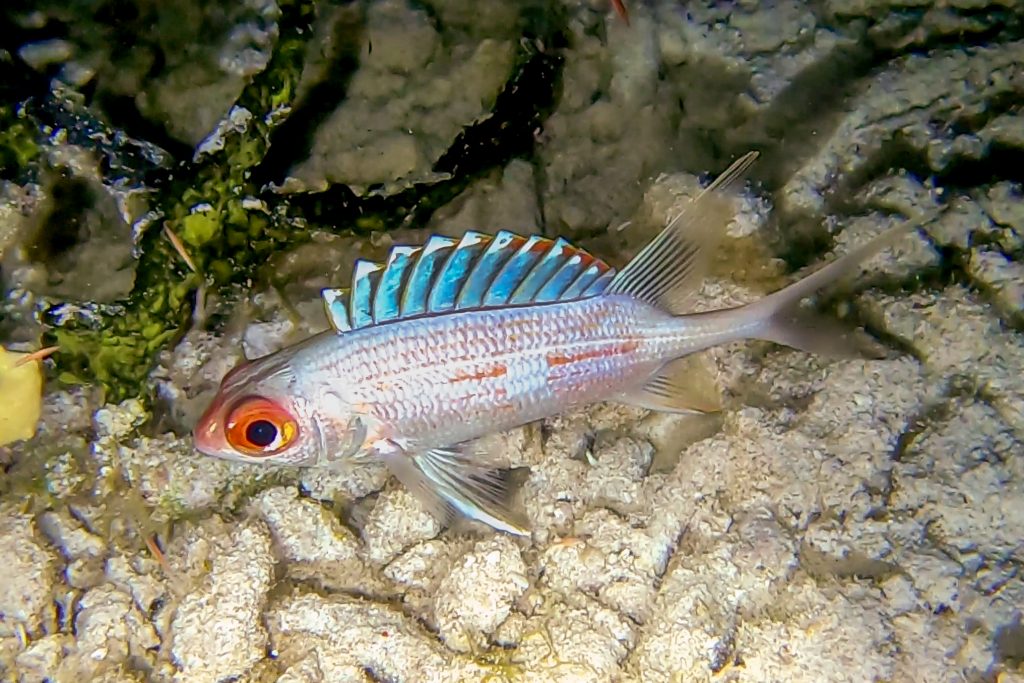
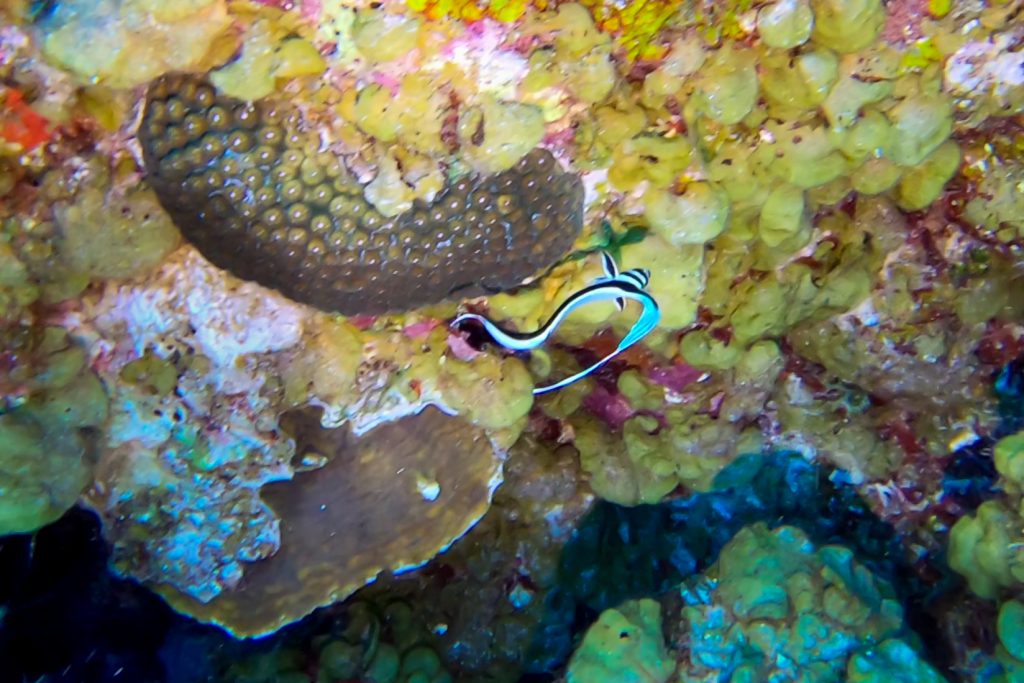
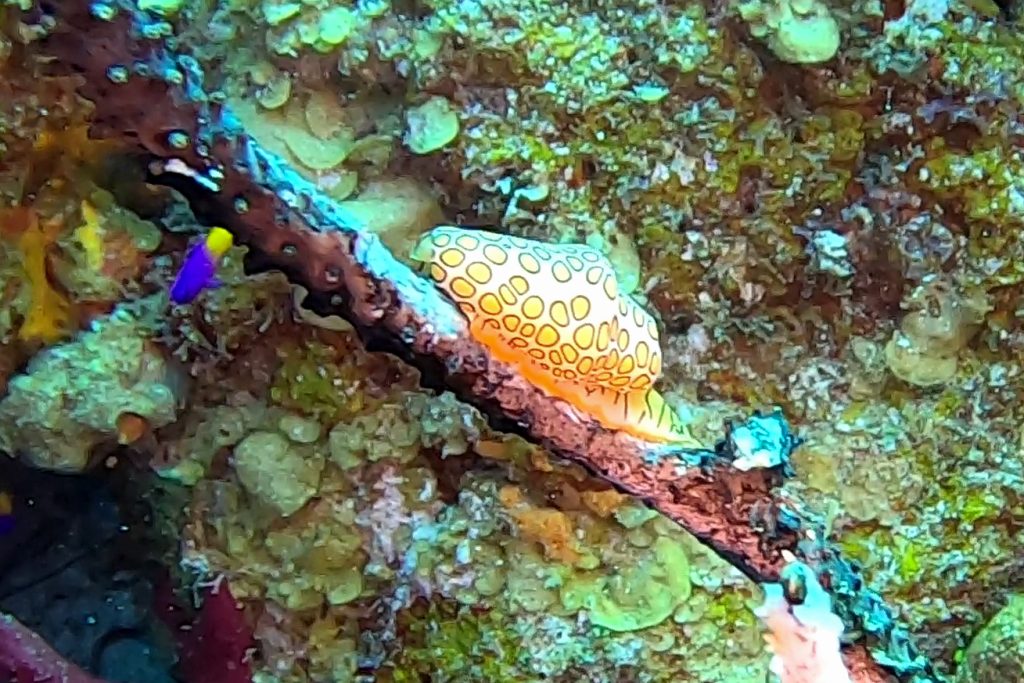
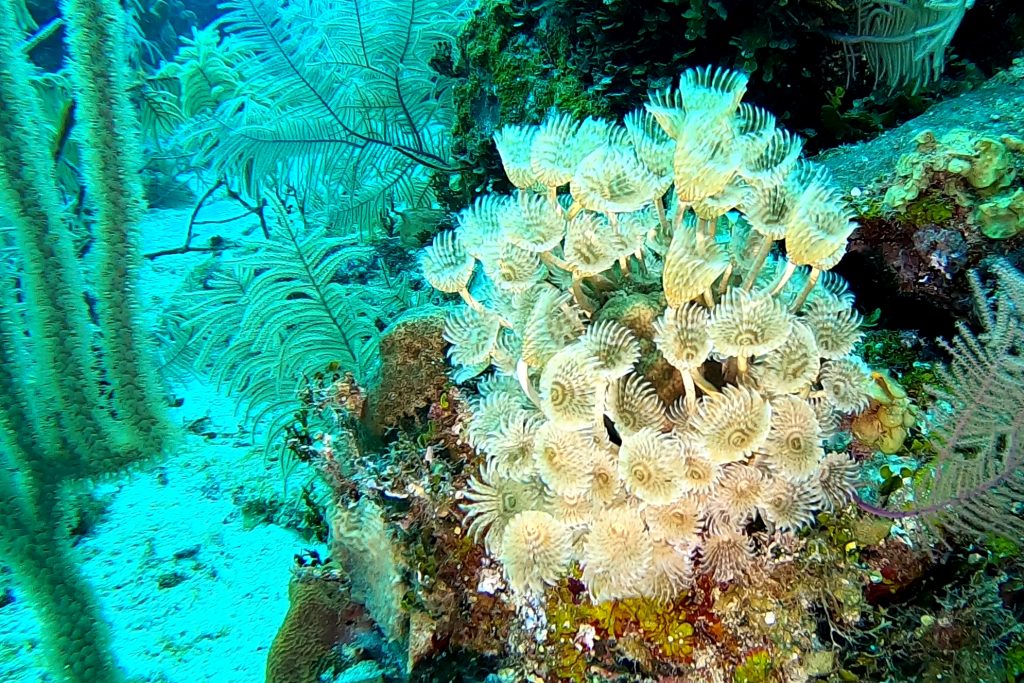
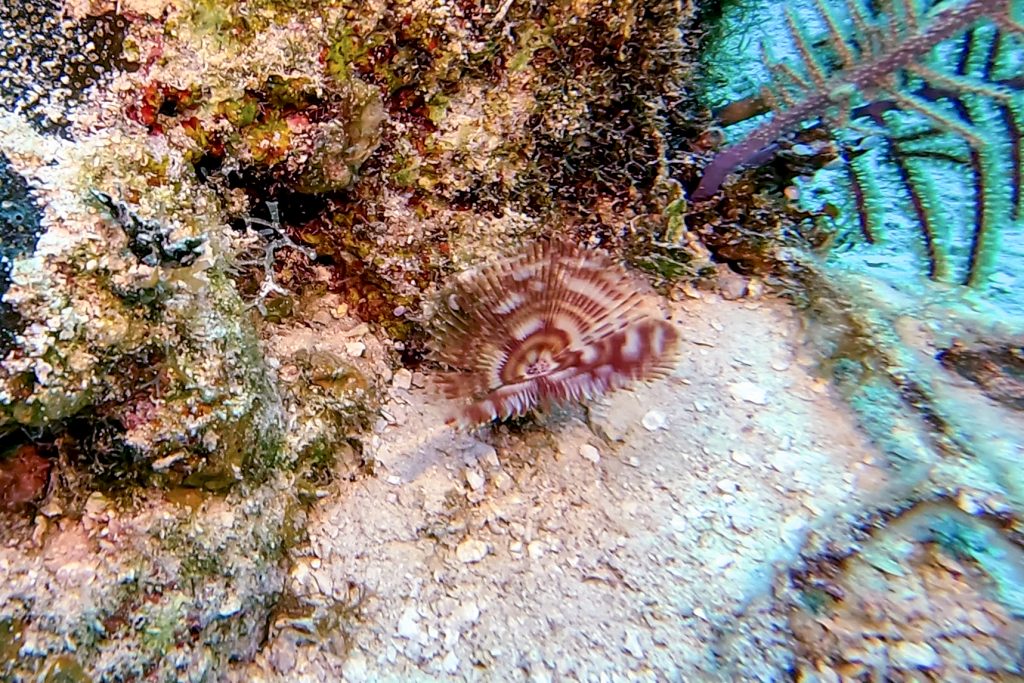
WEIRD SHAPES
• Longsnout Seahorses
• Atlantic Trumpetfish and Smooth Trunkfish
• Peacock Flounder and Puffer
• Caribbean Spiny Lobster and Sand Diver Lizardfish
• Banded Coral Shrimp and Nassau Grouper
• Sea Cucumbers
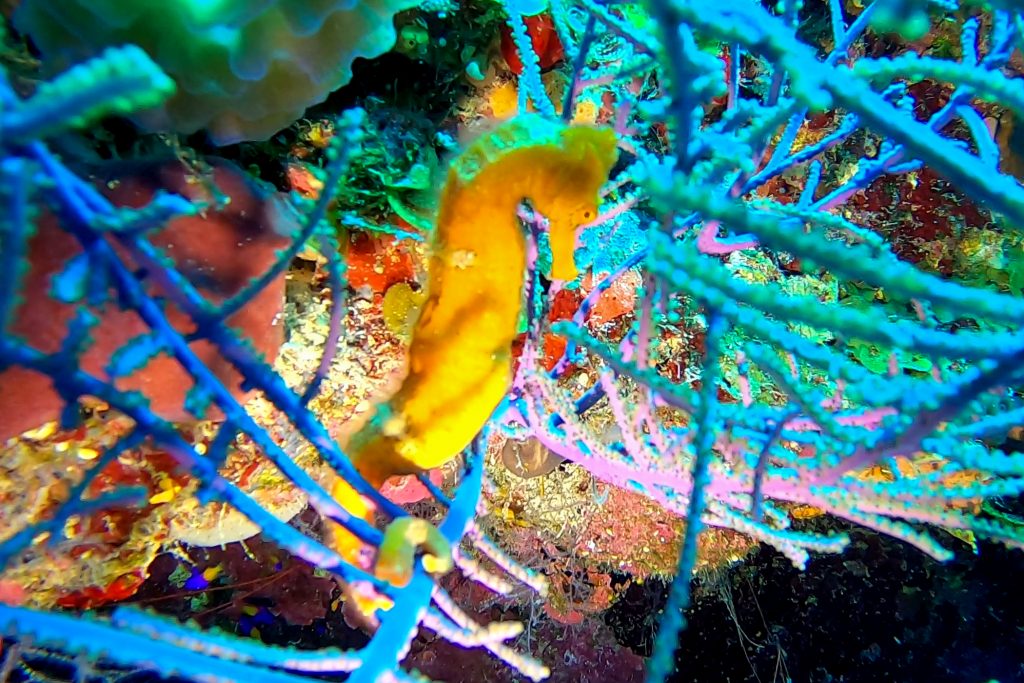
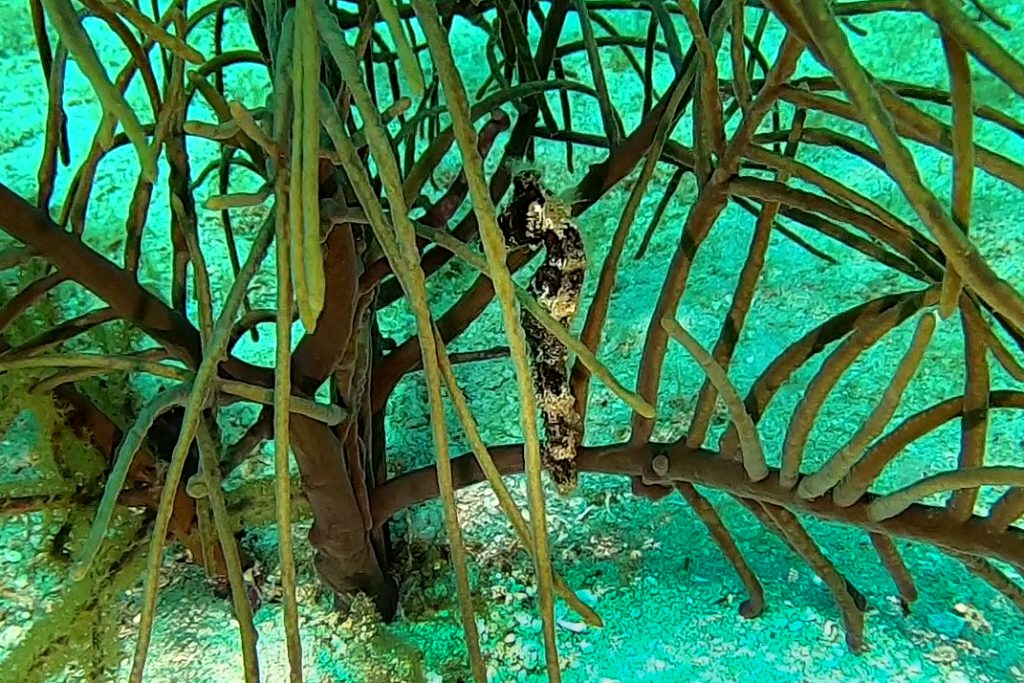
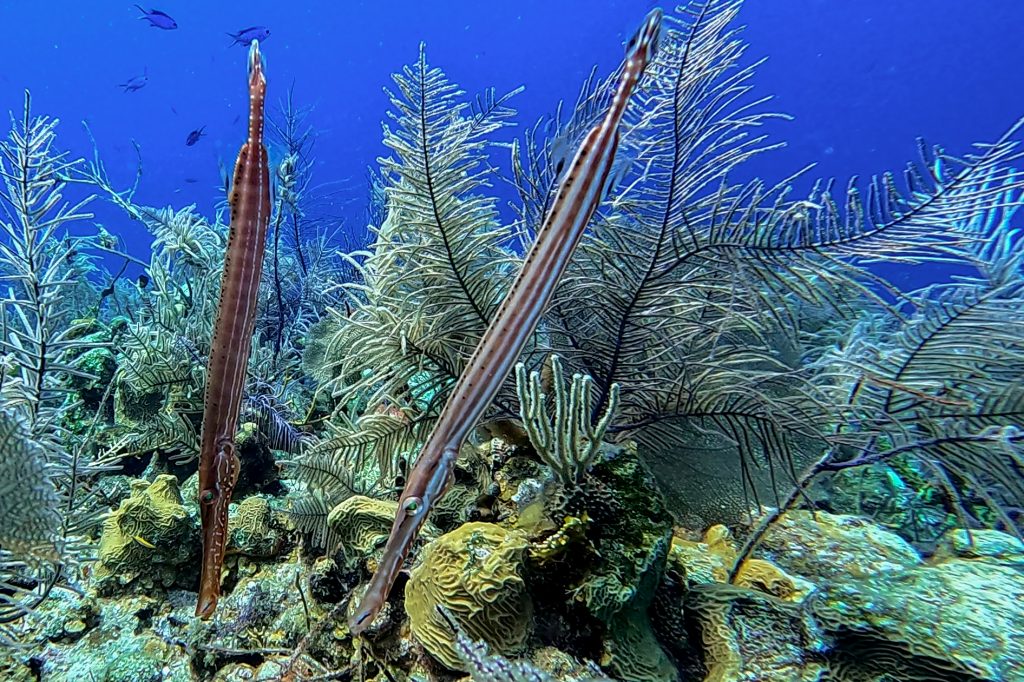
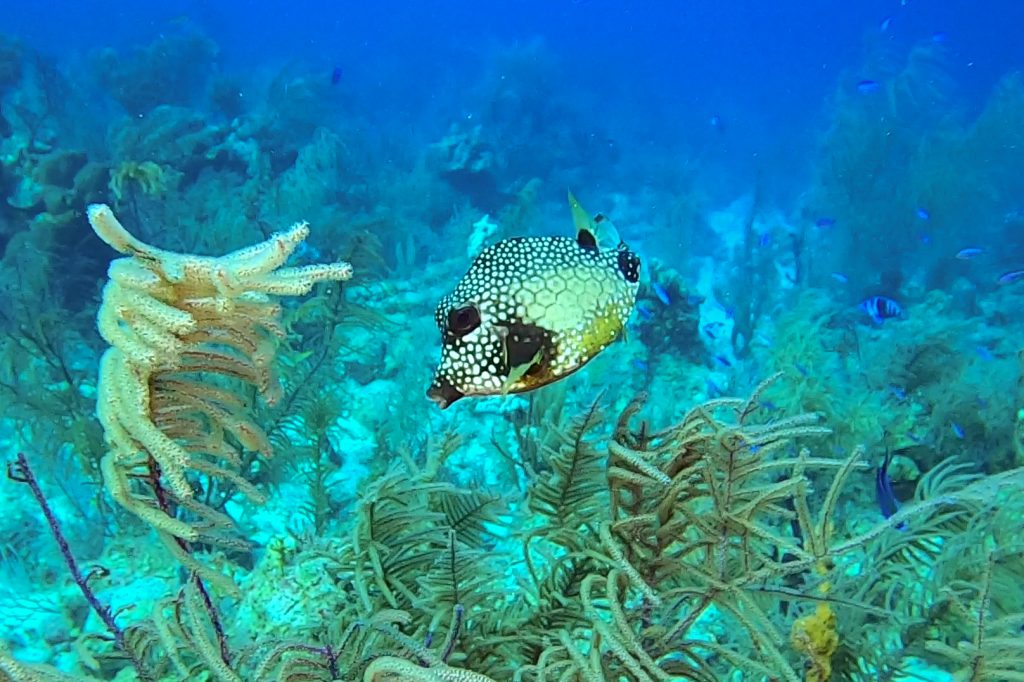
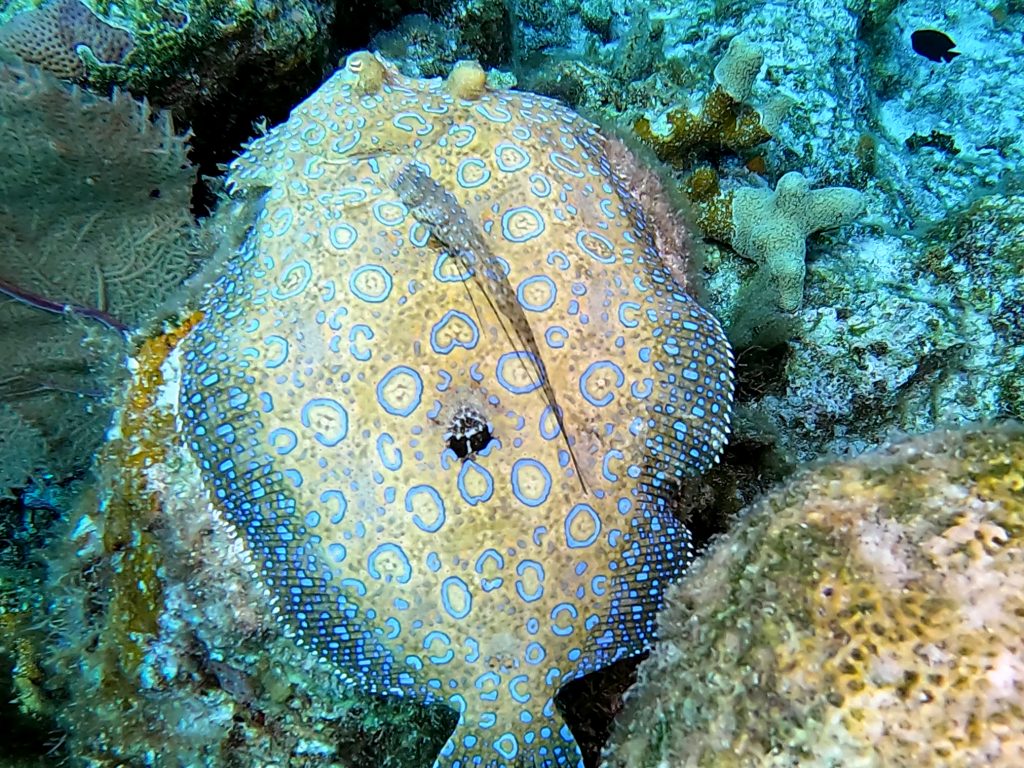
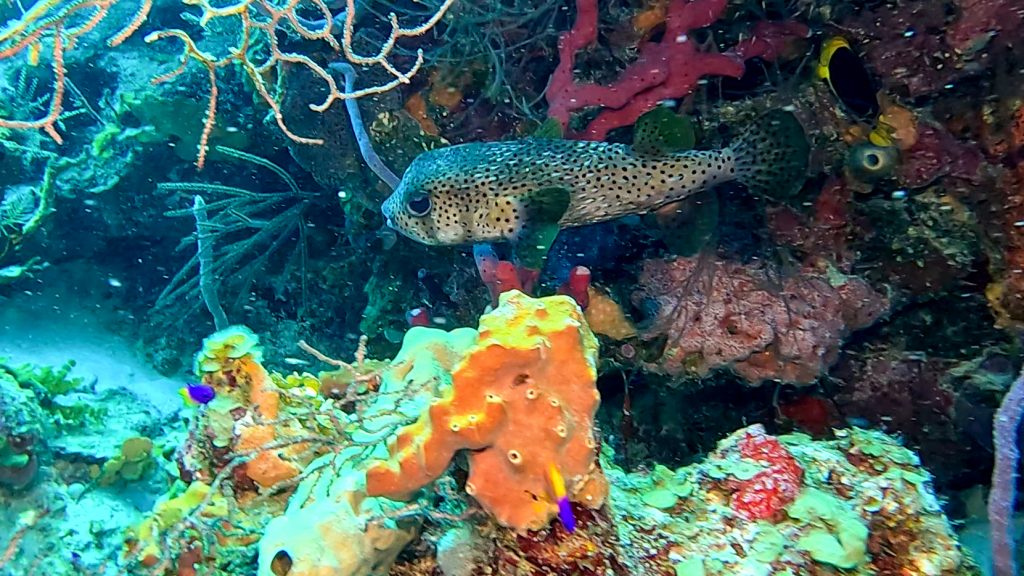
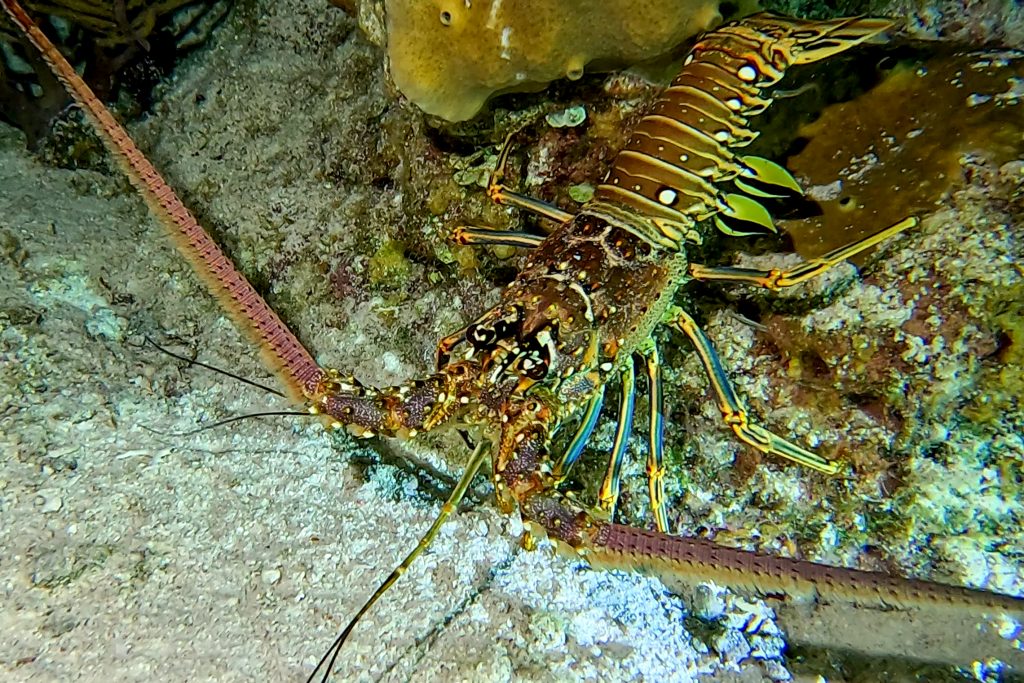
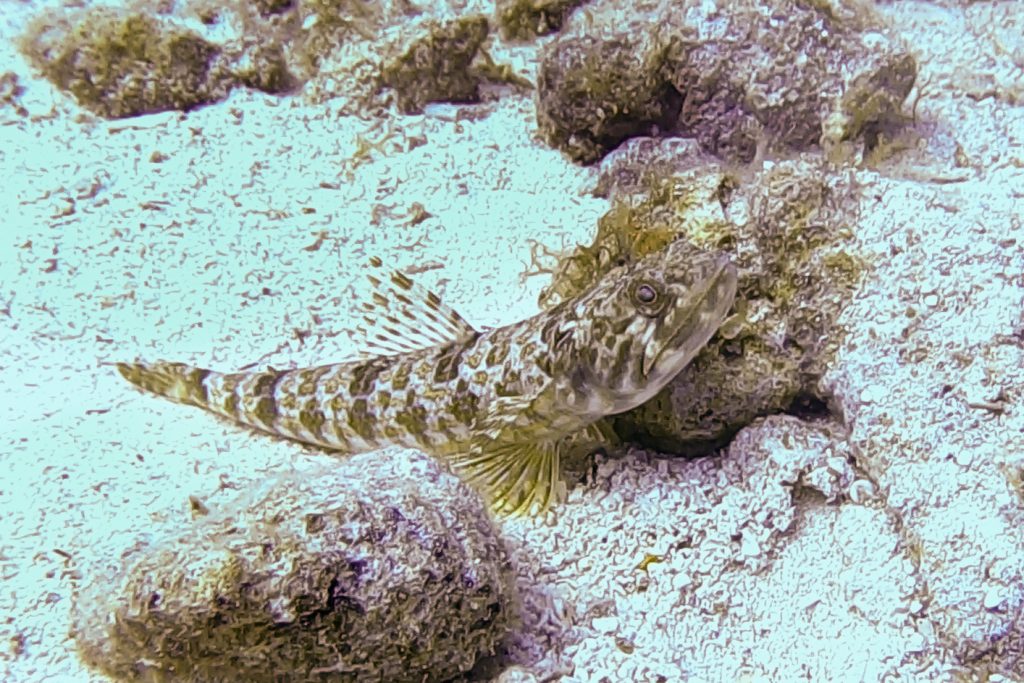
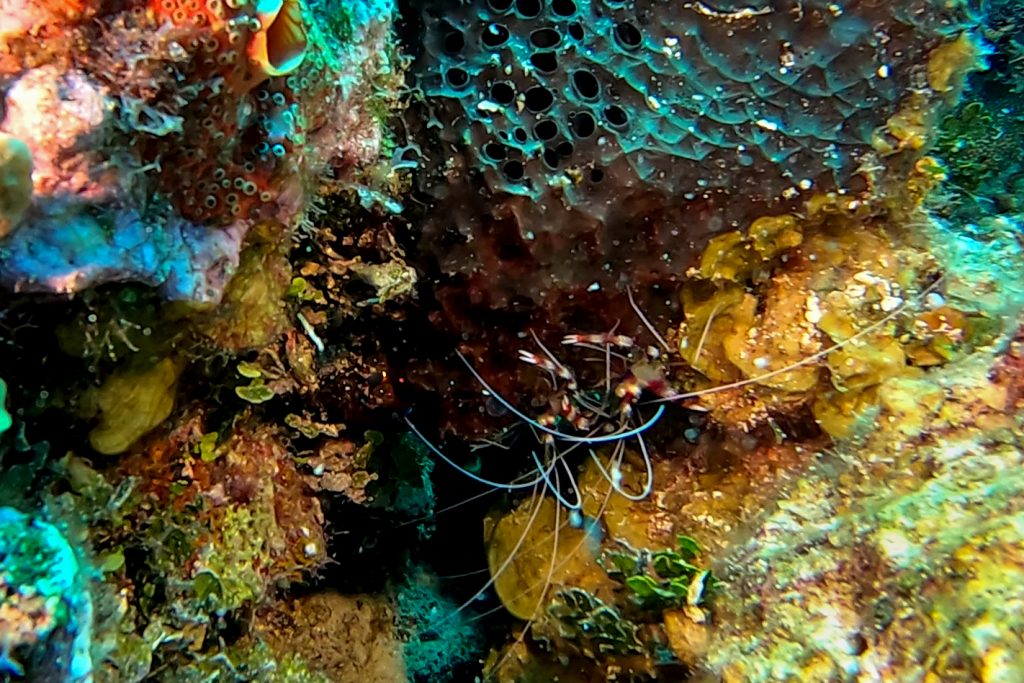
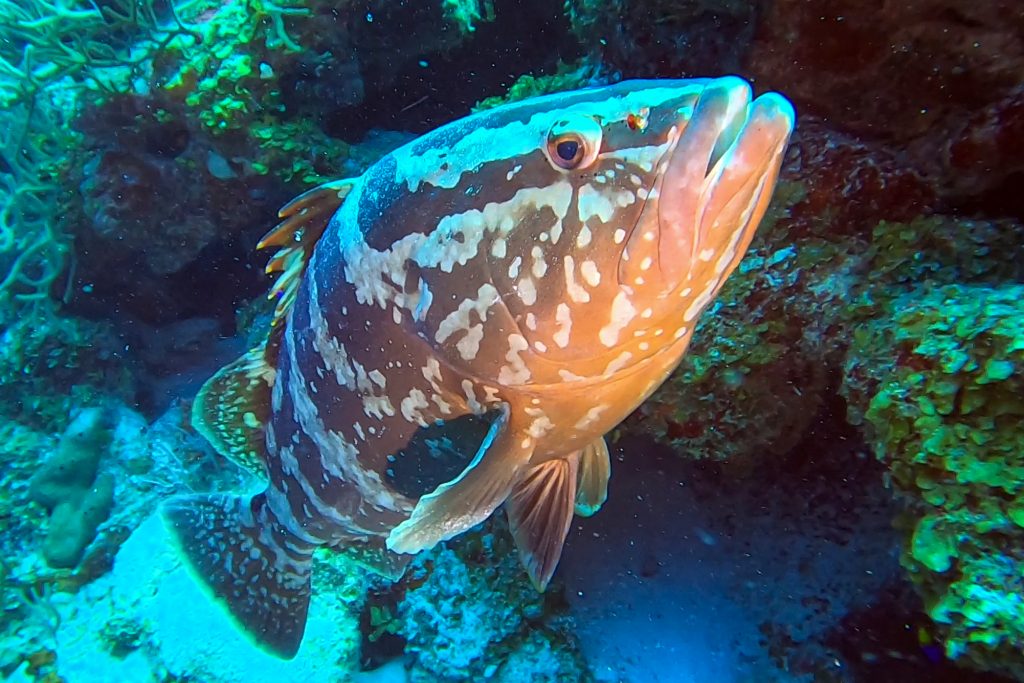
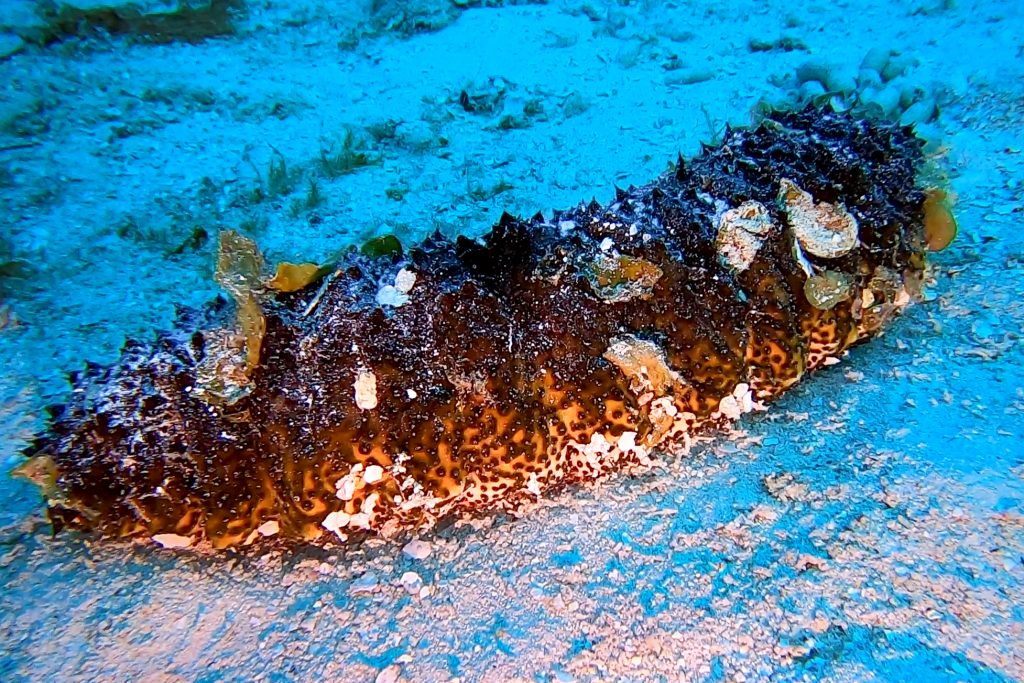
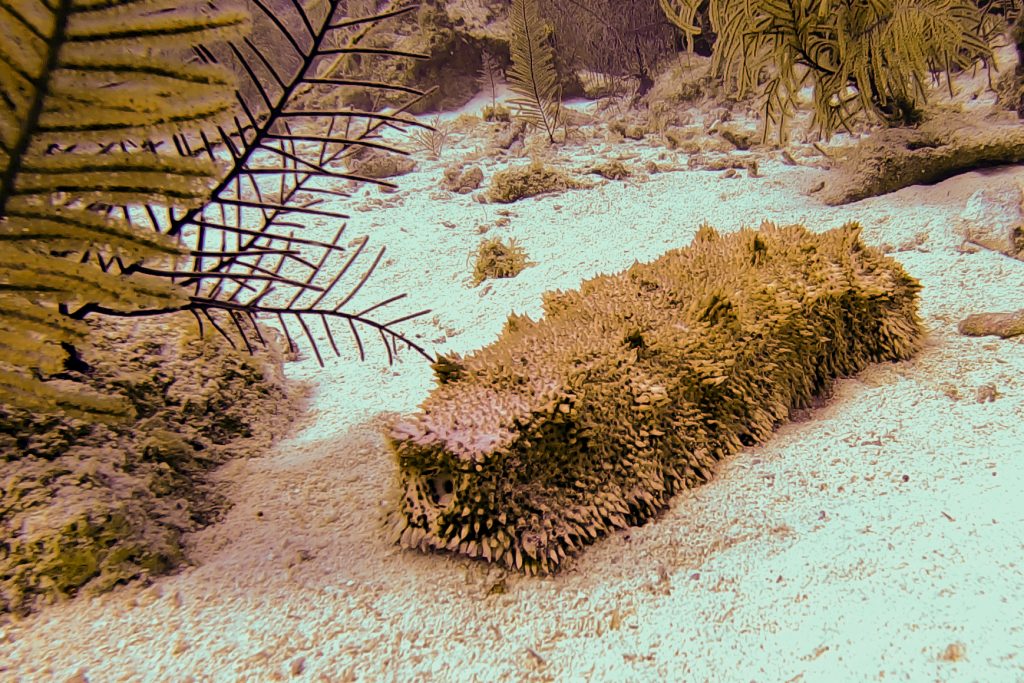
CORALS AND SPONGES
• Corals, Sponges, and a Sea Rod Gorgonian
• Sea Fans
• Brain Coral
• Great Star Coral (in the daytime and at night)
• Tube Sponges and Barrel Sponges
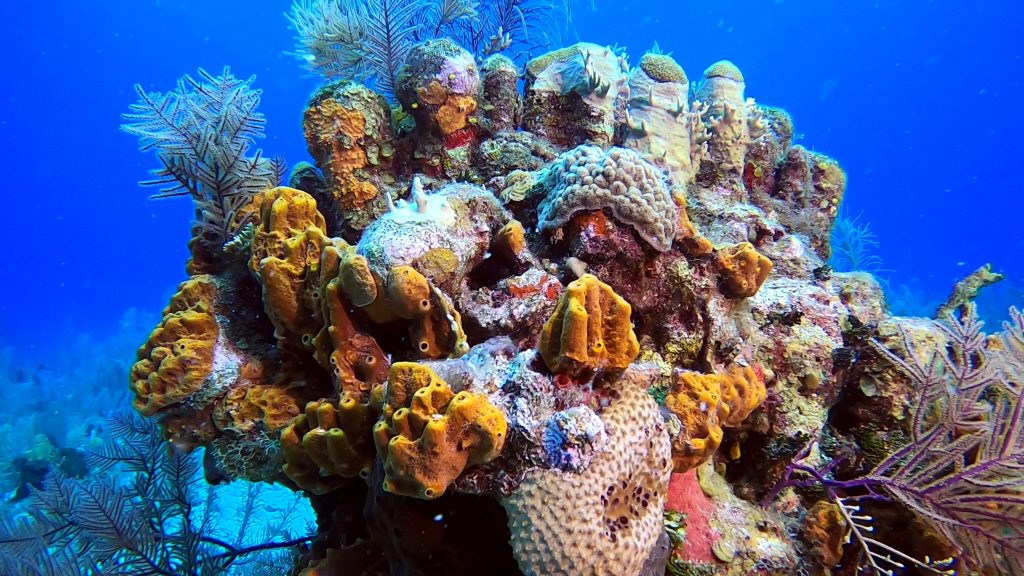
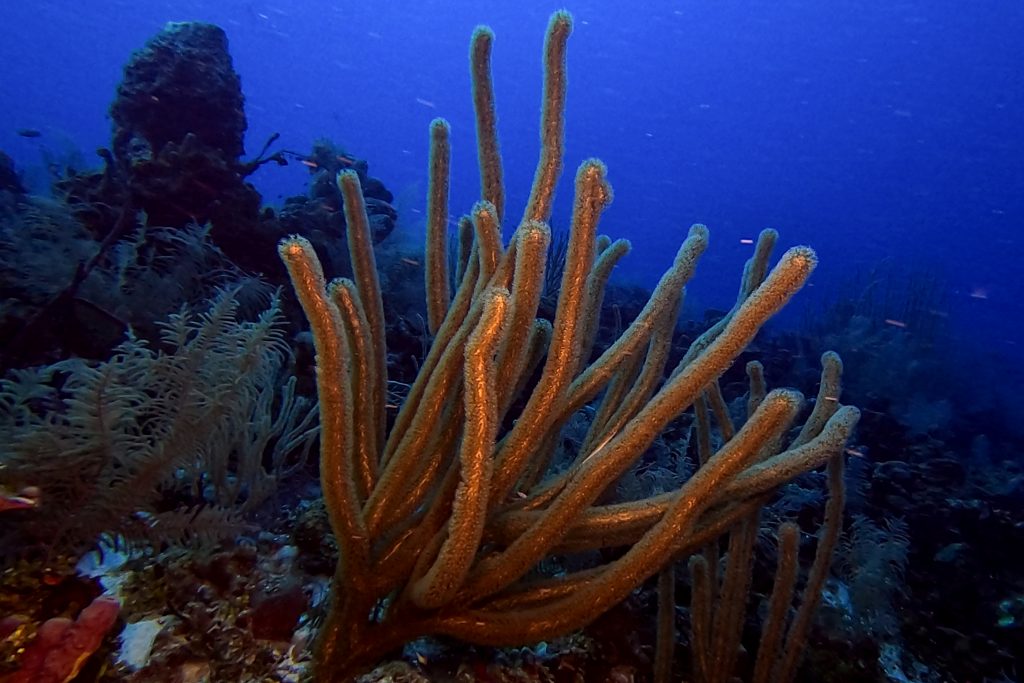
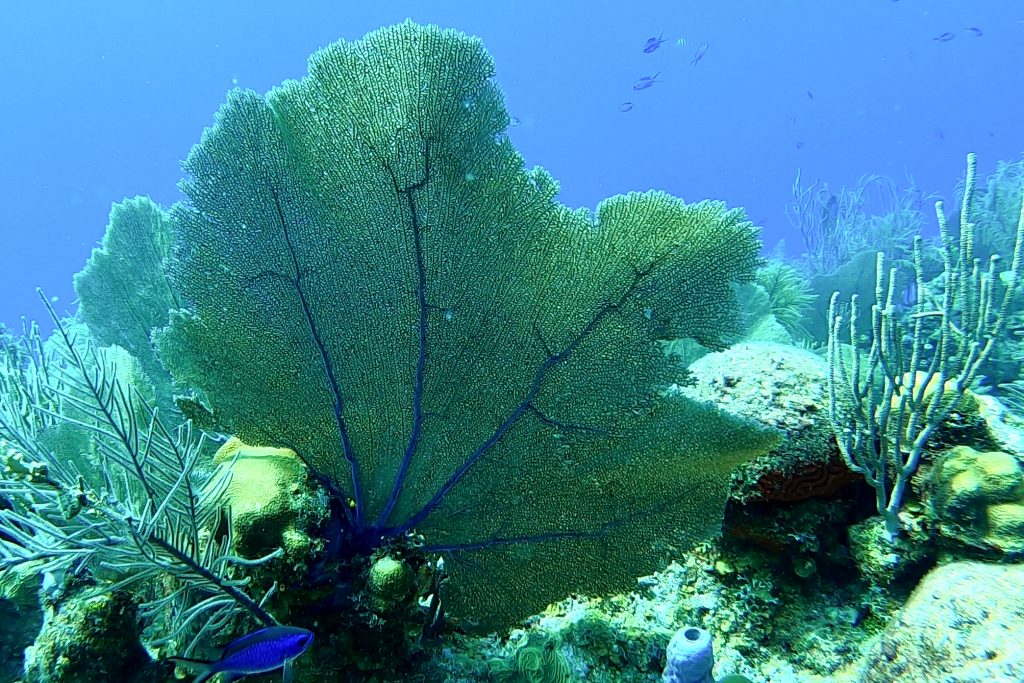
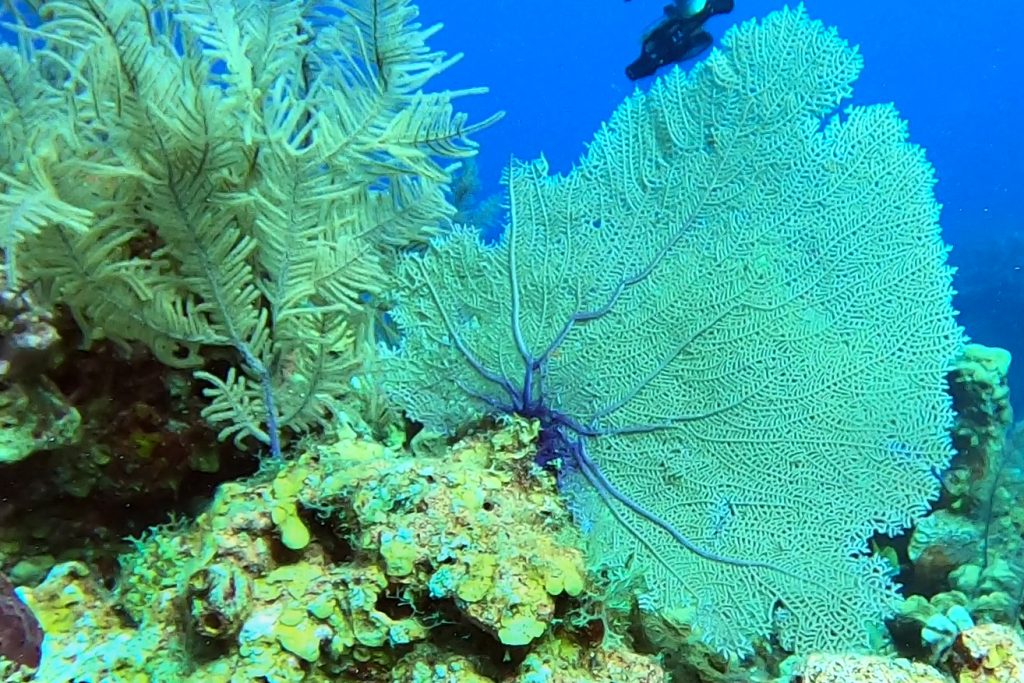
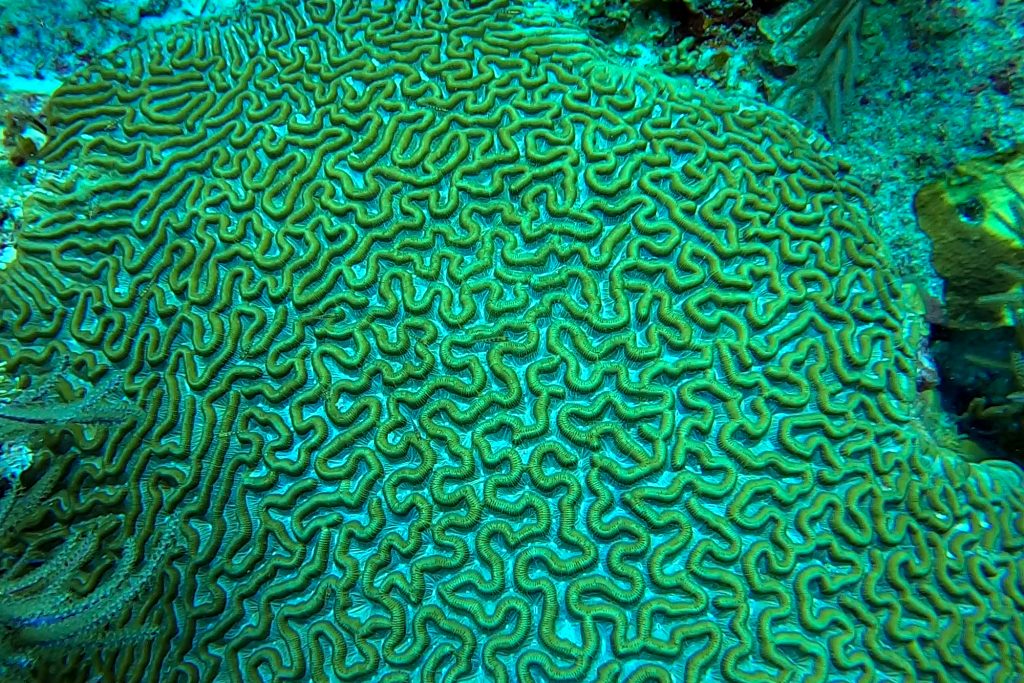
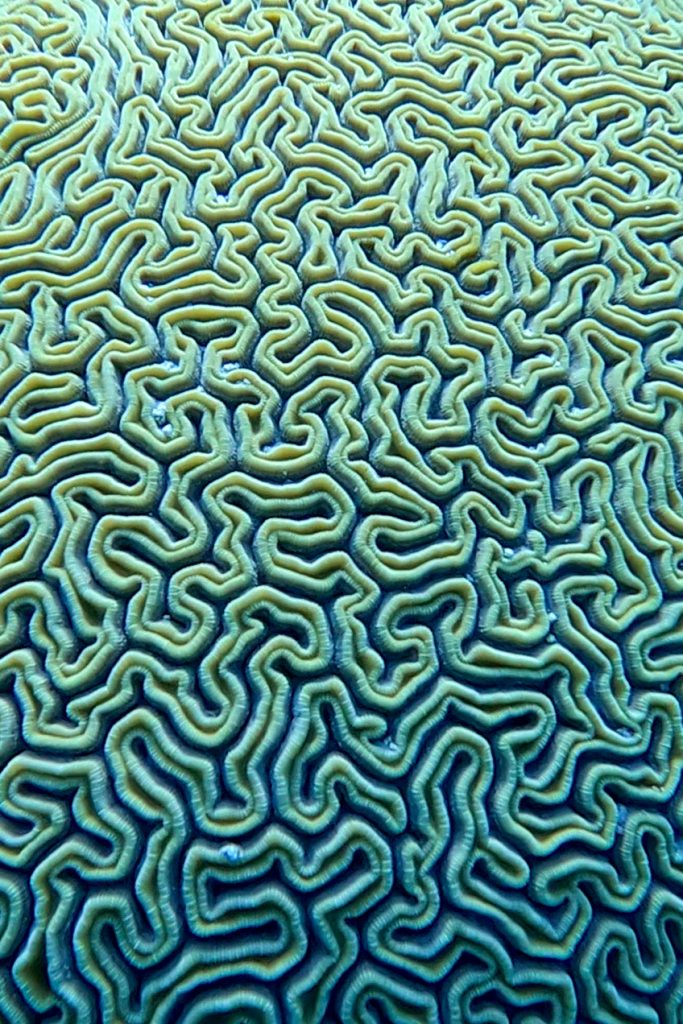
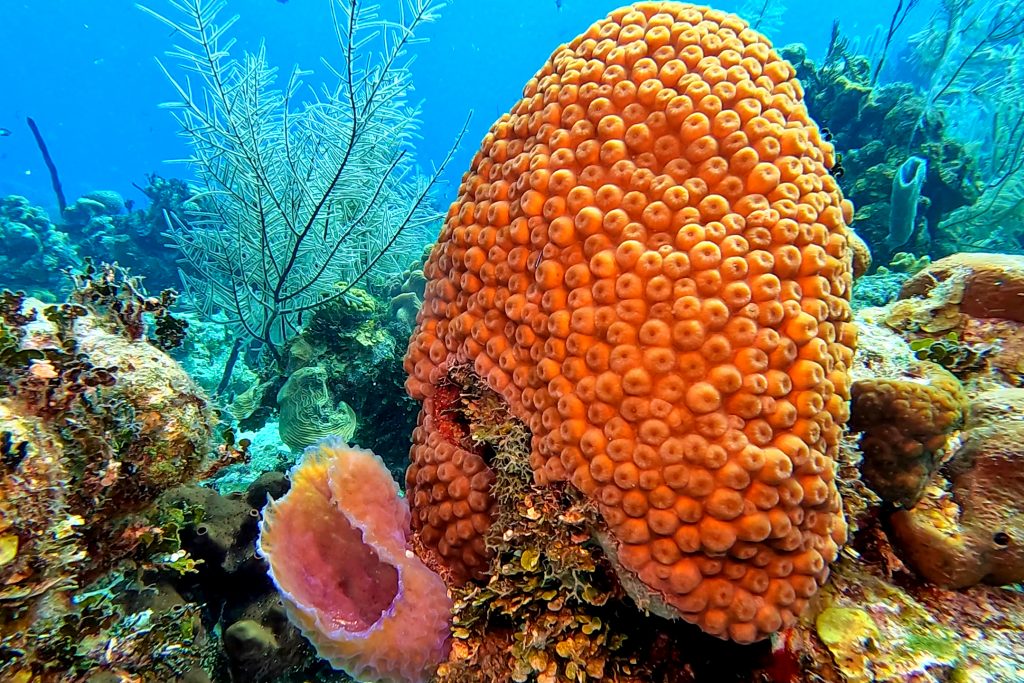
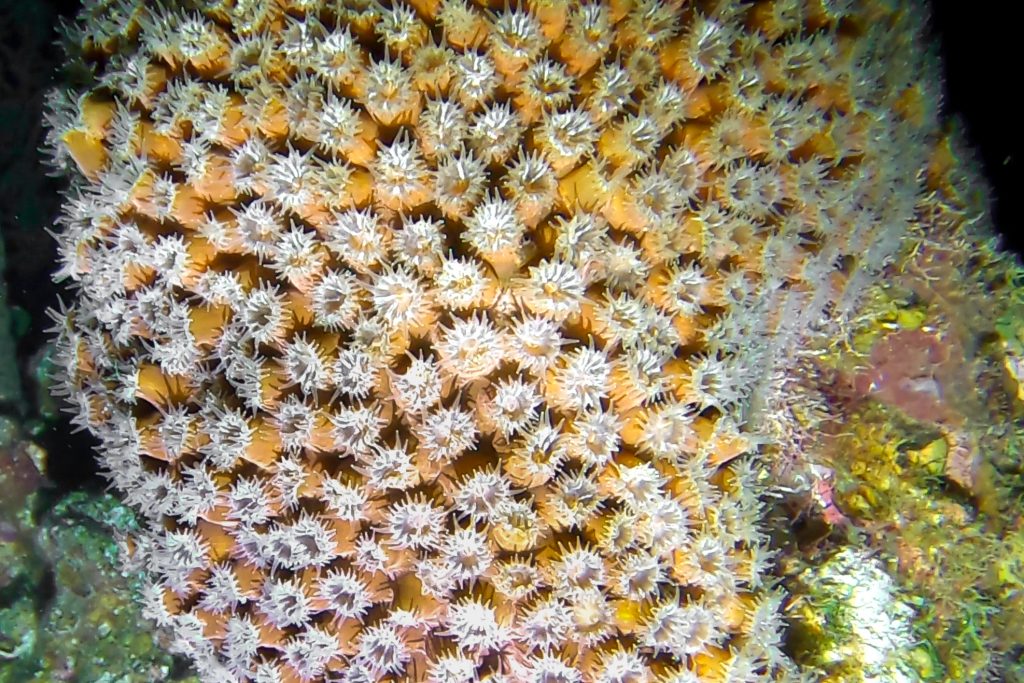
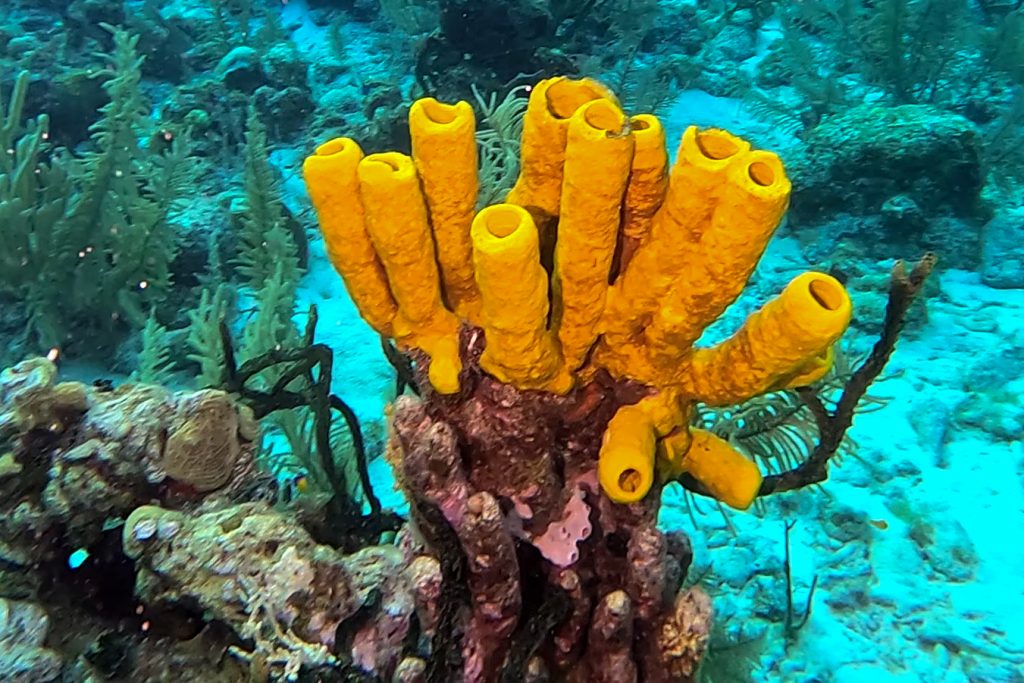
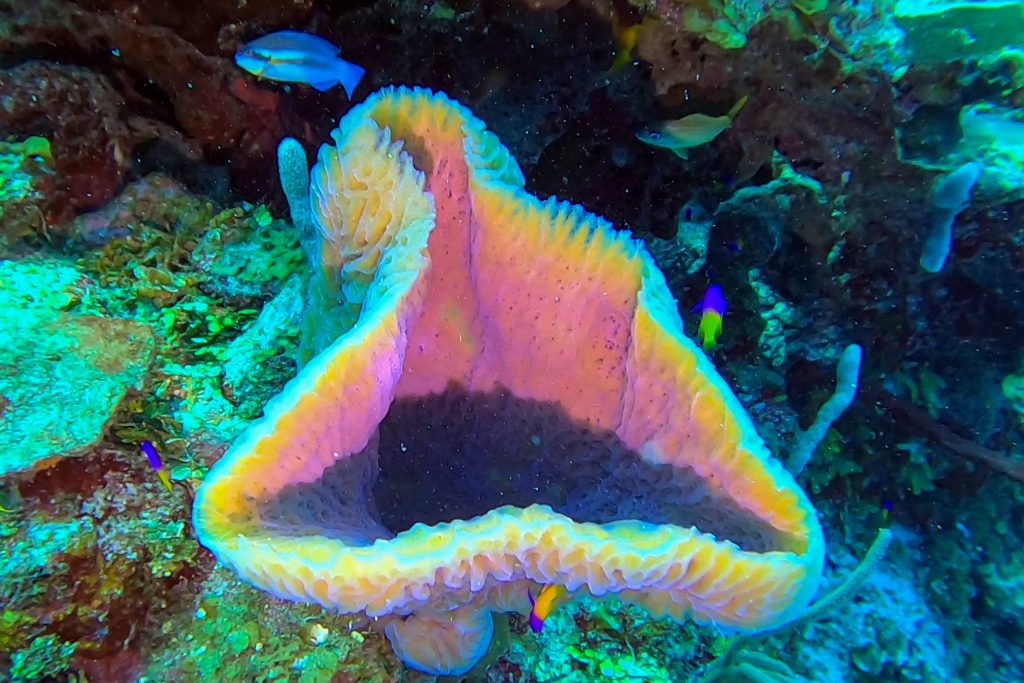
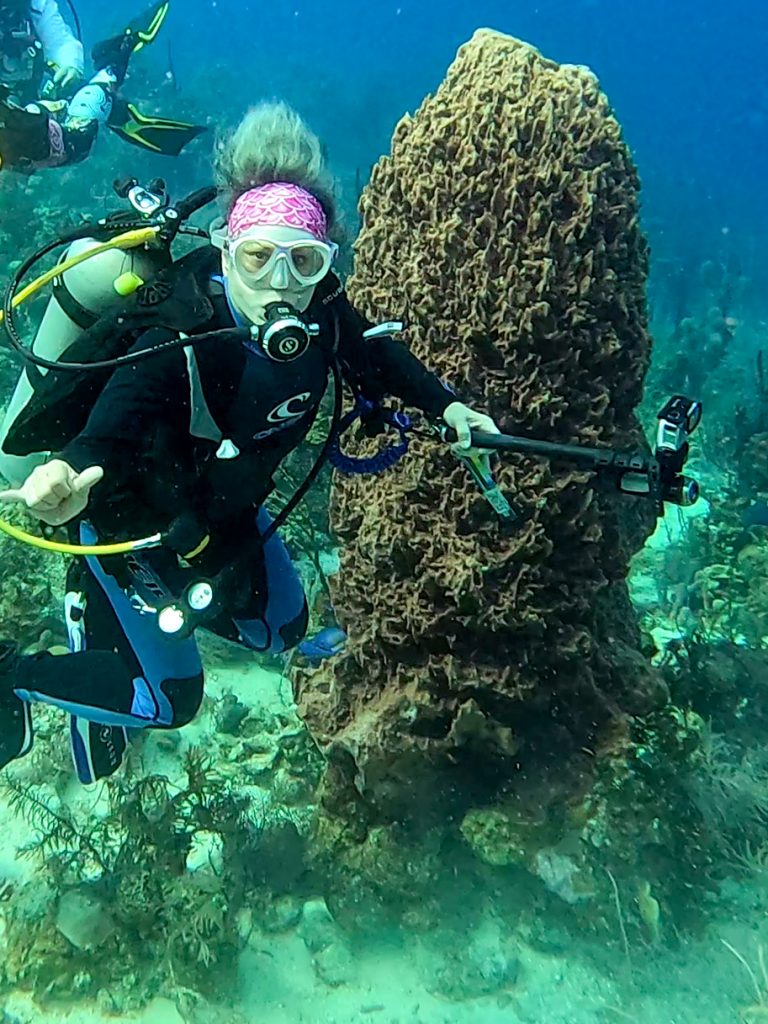
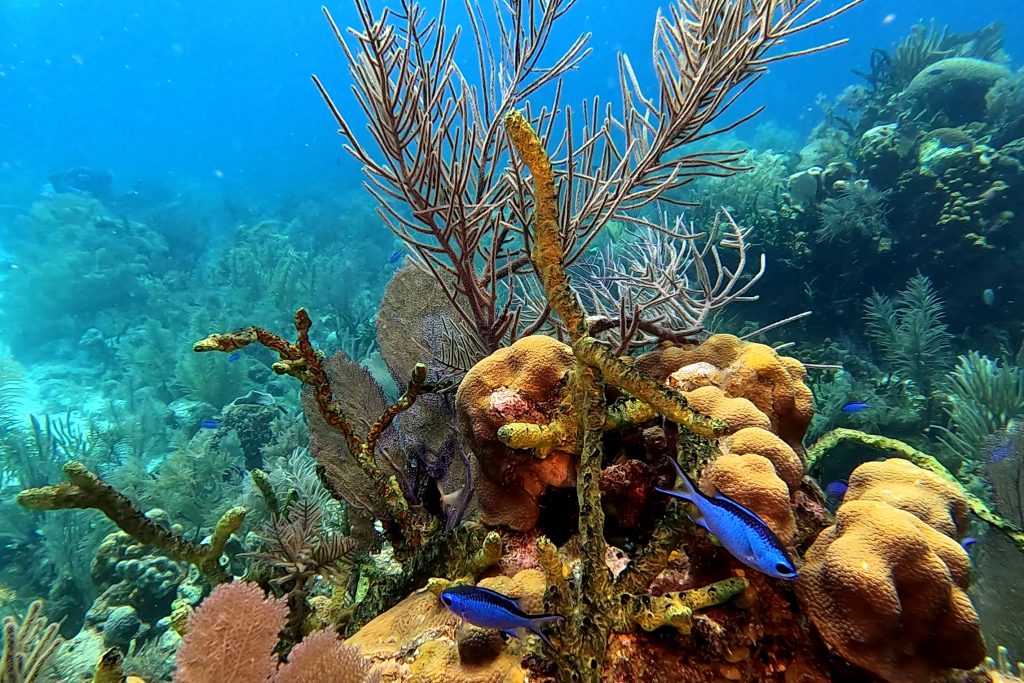
ENTERTAINING TO WATCH
• Yellowhead Jawfish and Garden Eels
• Sand Tilefish and Crabs
• Goatfish
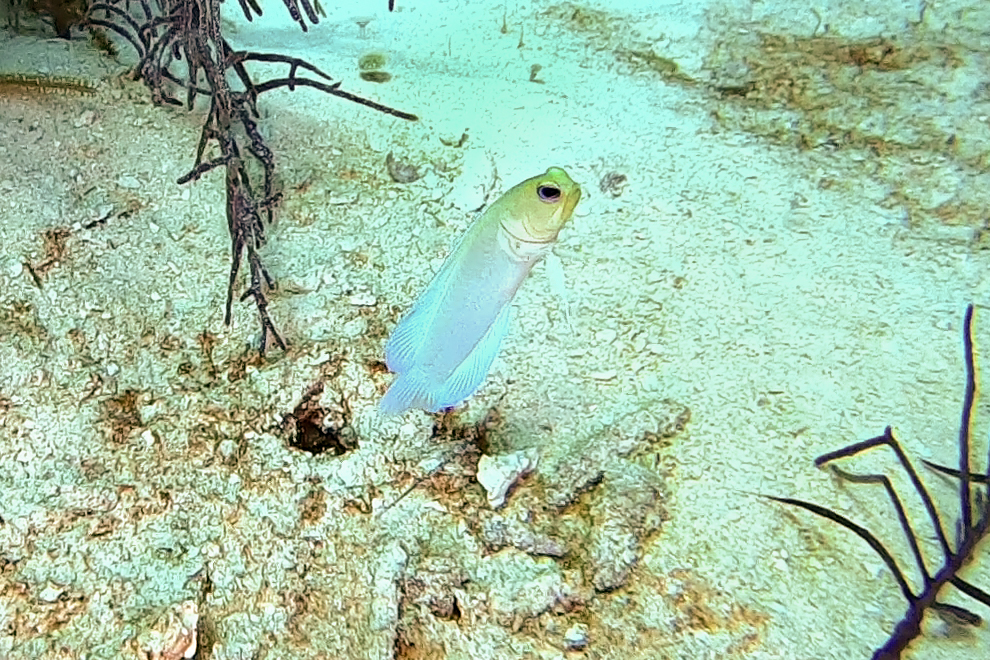
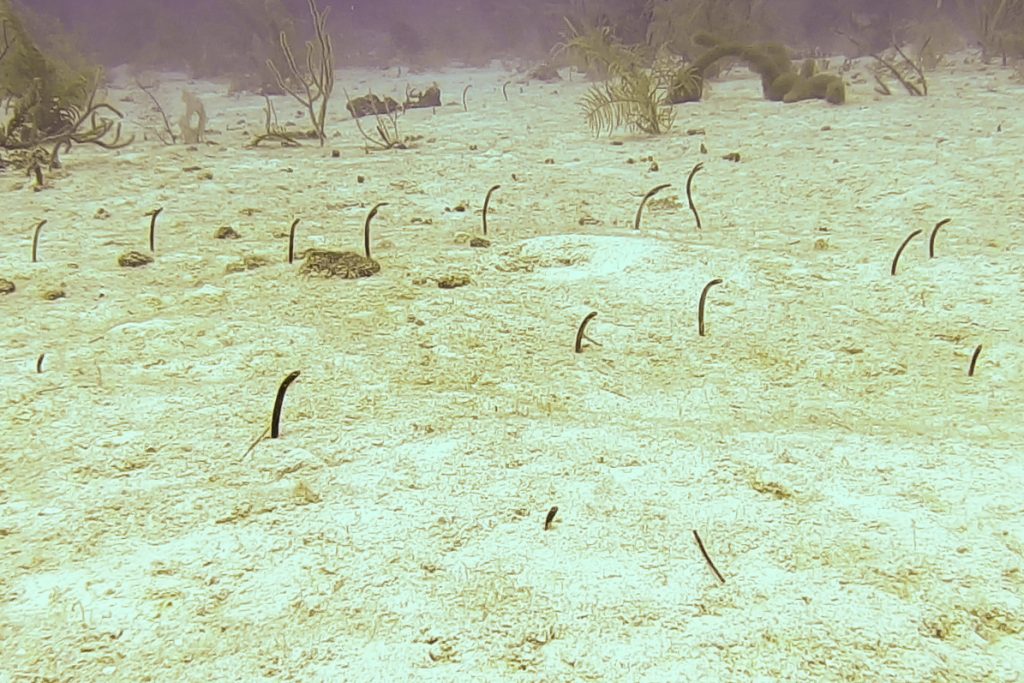
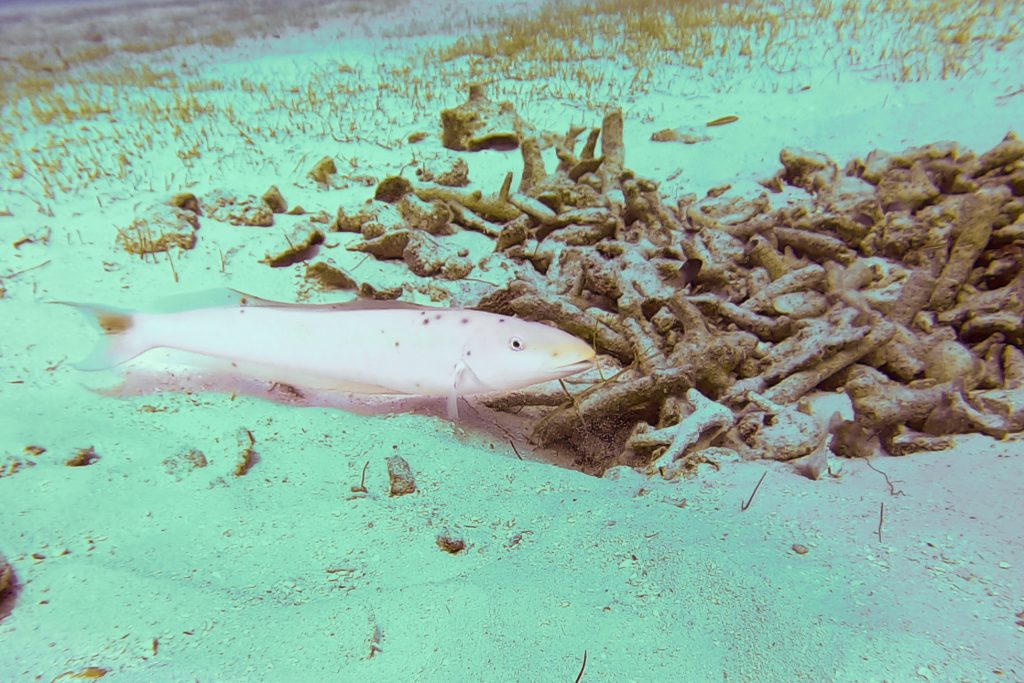
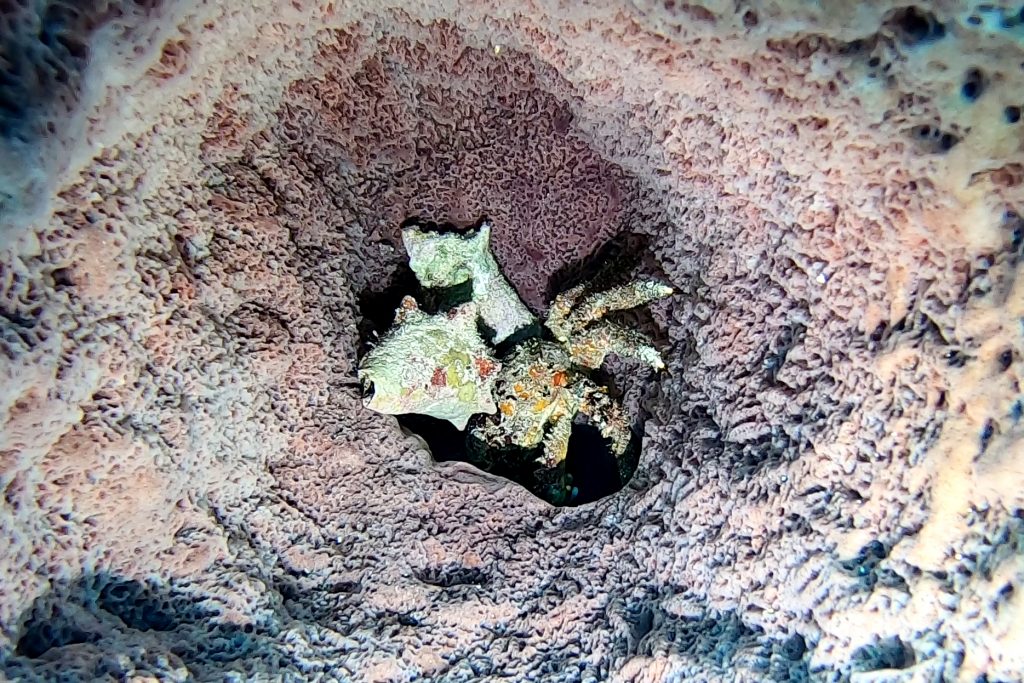
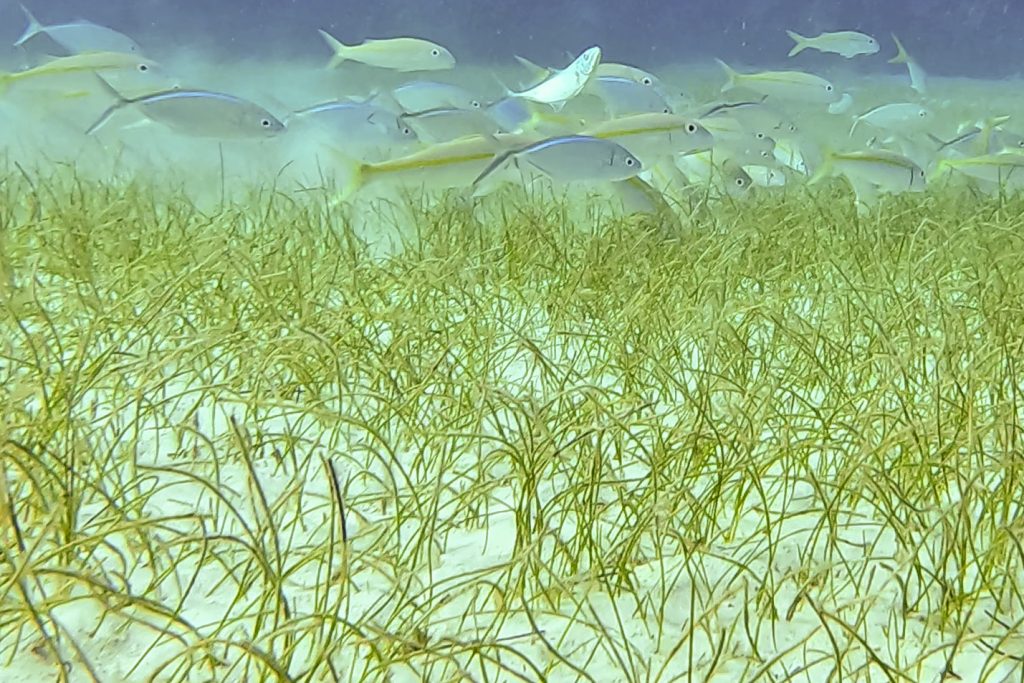
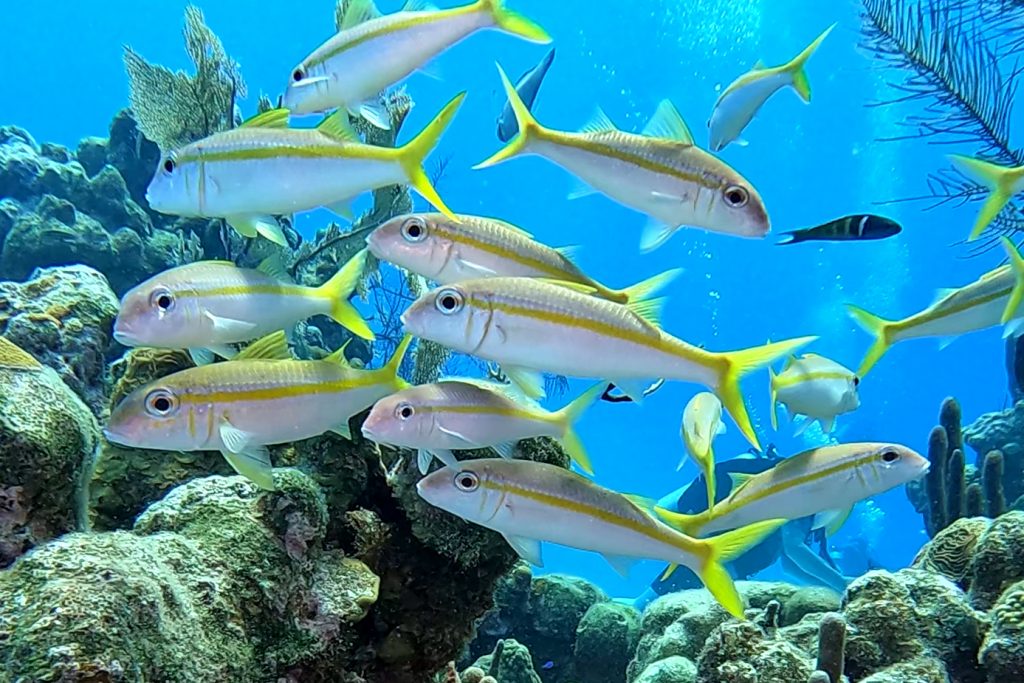
If you’re still reading, thank you! We’re almost done. After we returned to port, we were able to visit the Mayan Ruins at Altun Ha, about 30 minutes away from the boat dock. Our driver Dean and guide Frederick filled us in on local history. Frederick explained that this particular Mayan village was not near water, but was inhabited because of the abundance of flint in the area, used for making weapons. Beautiful jade carvings have also been discovered here. The ruins encompass a 3-square-mile area, though the village was almost certainly larger.
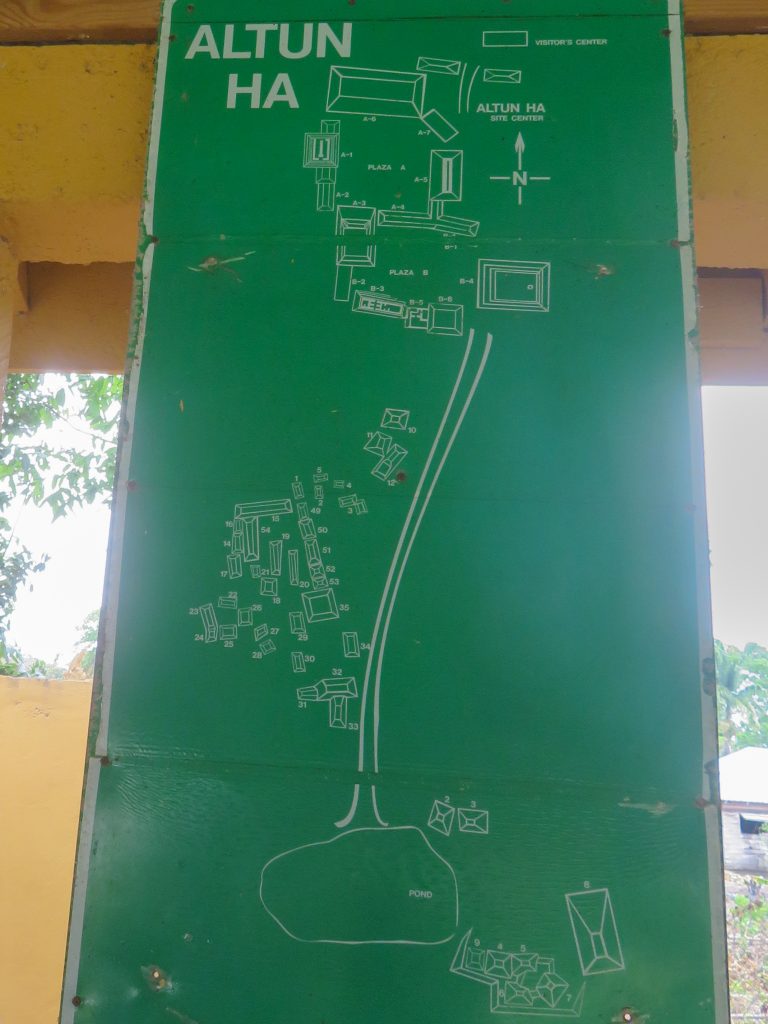
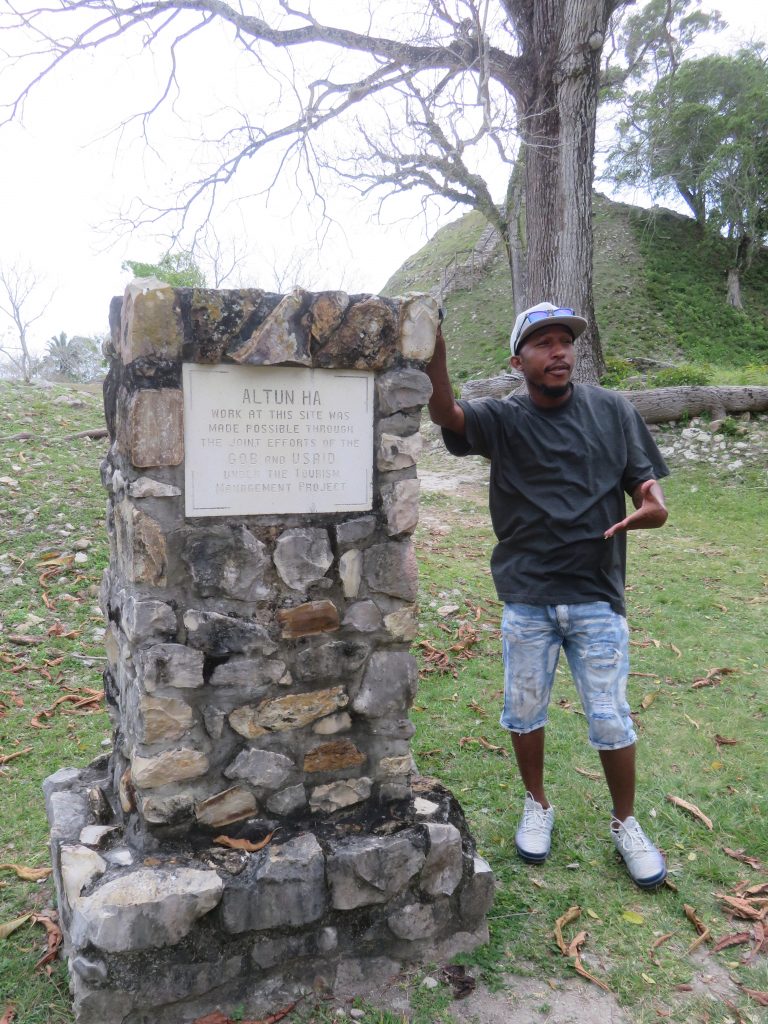
We were able to climb to the top of two of the temple structures, as we learned about economic and religious aspects of the Mayan people over 2000 years ago. It was a field trip definitely worth doing! And the iguana we spotted was a little wildlife bonus.
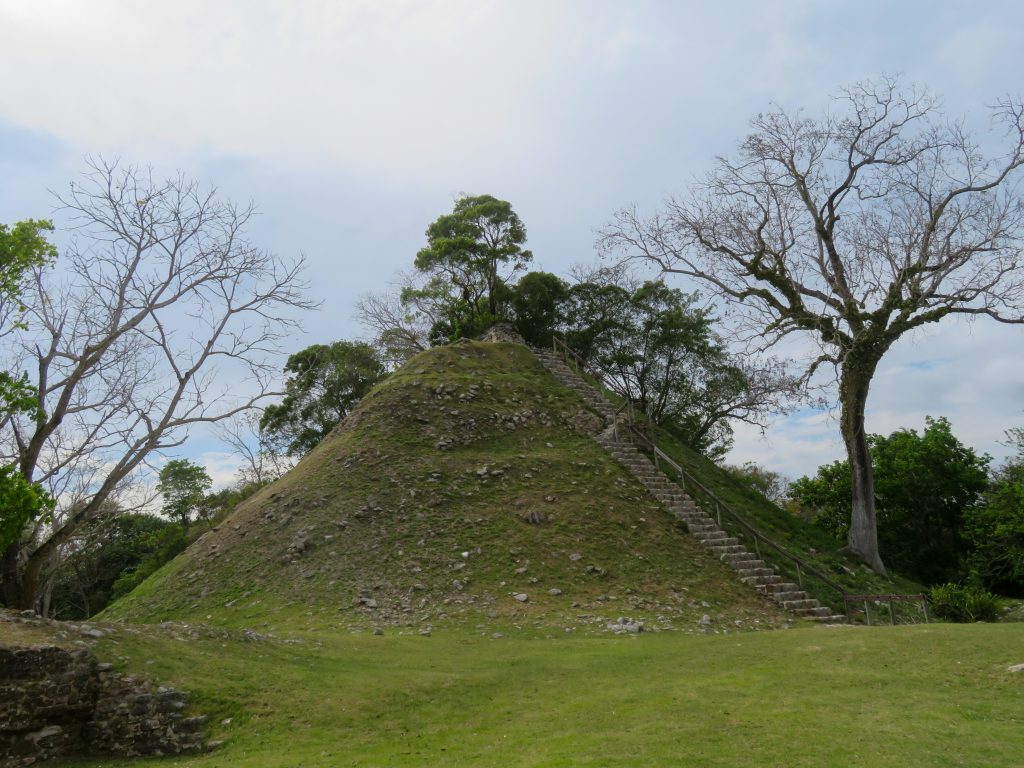
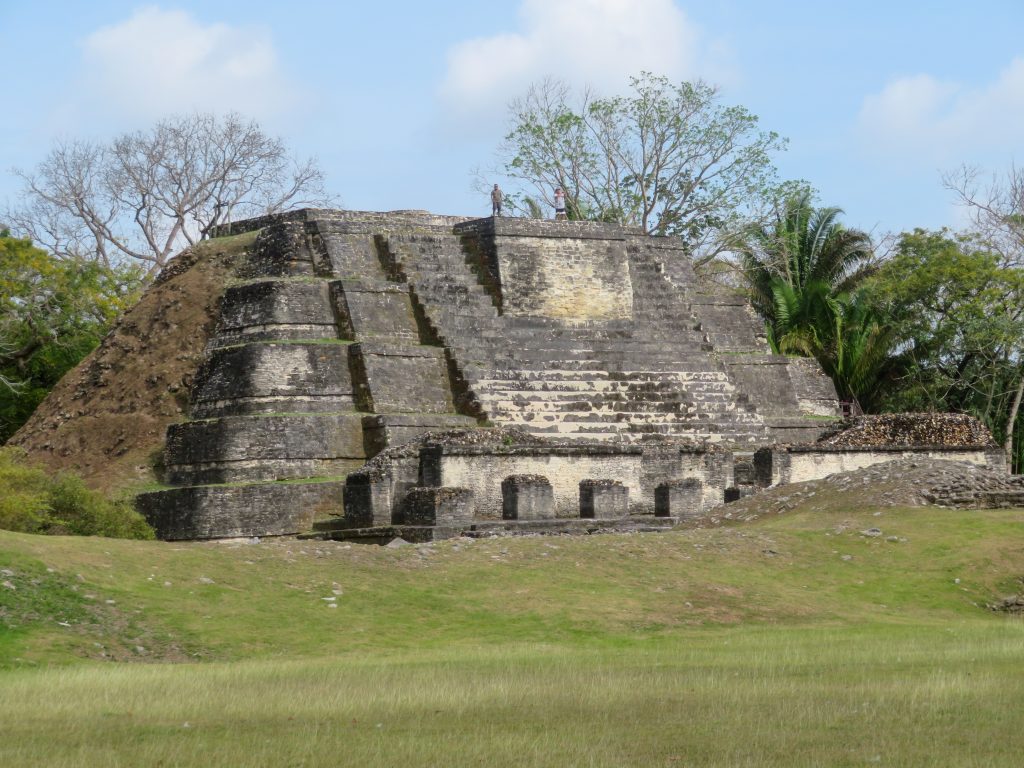
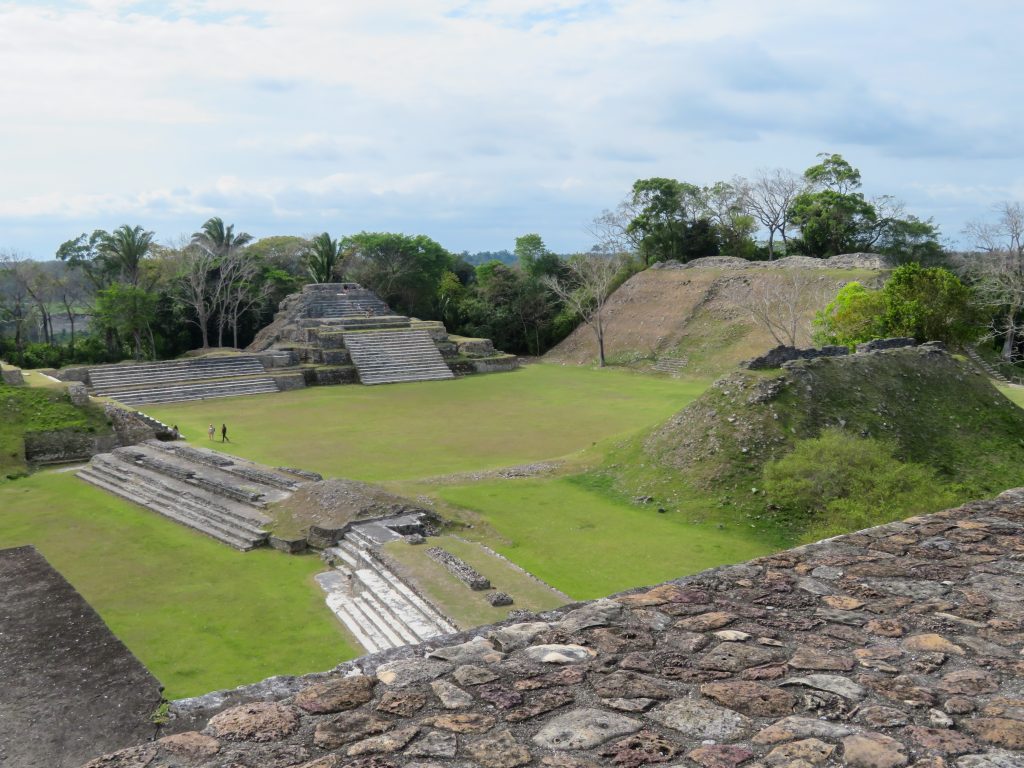
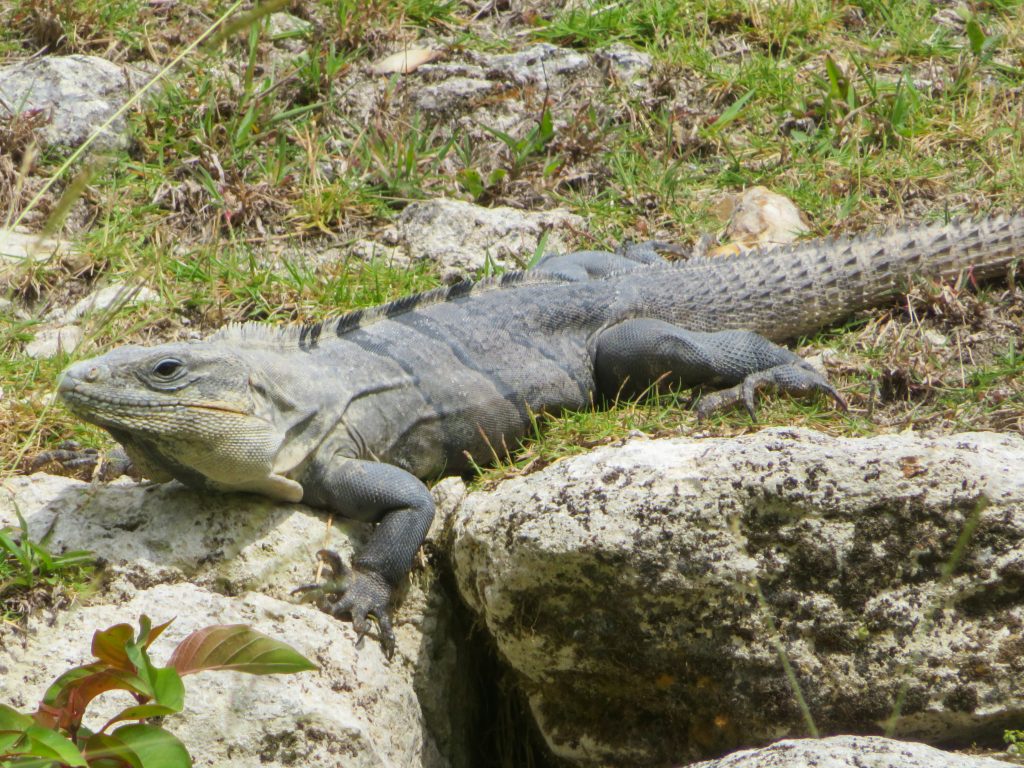
After negative Covid tests, we enjoyed a smooth trip home, thankful for the opportunity to travel internationally once again.
Till next trip…Thanks for reading. Again, here’s the link to Hank’s 10-minute iMovie–lots of sharks, rays, and beautiful fish!
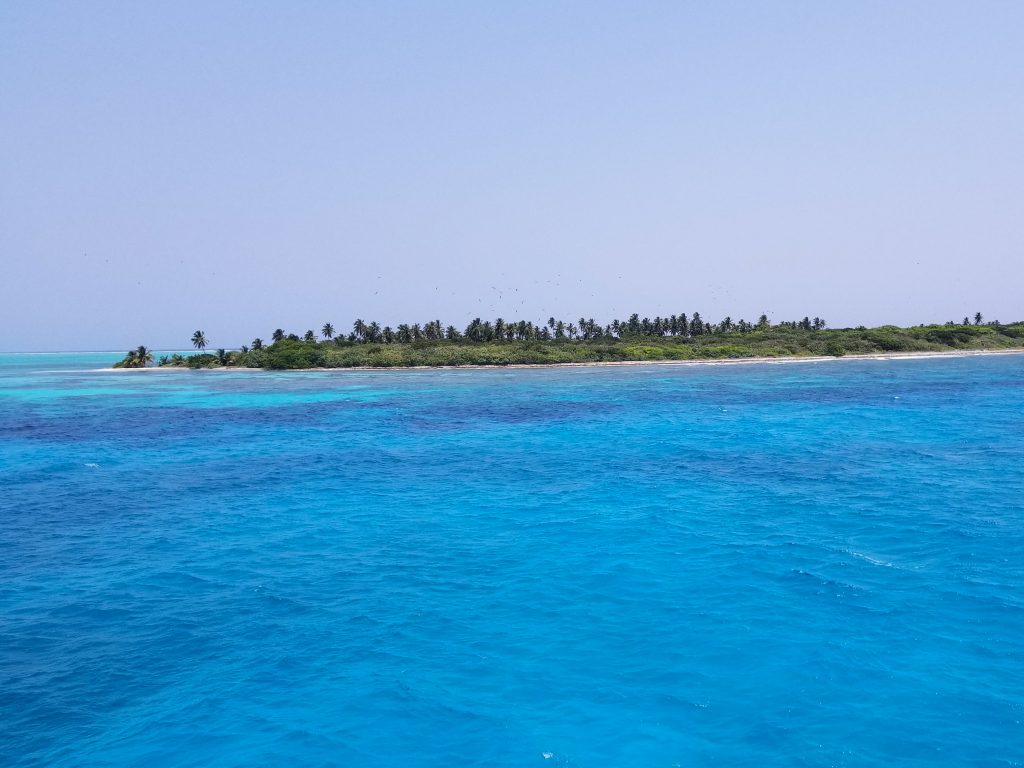

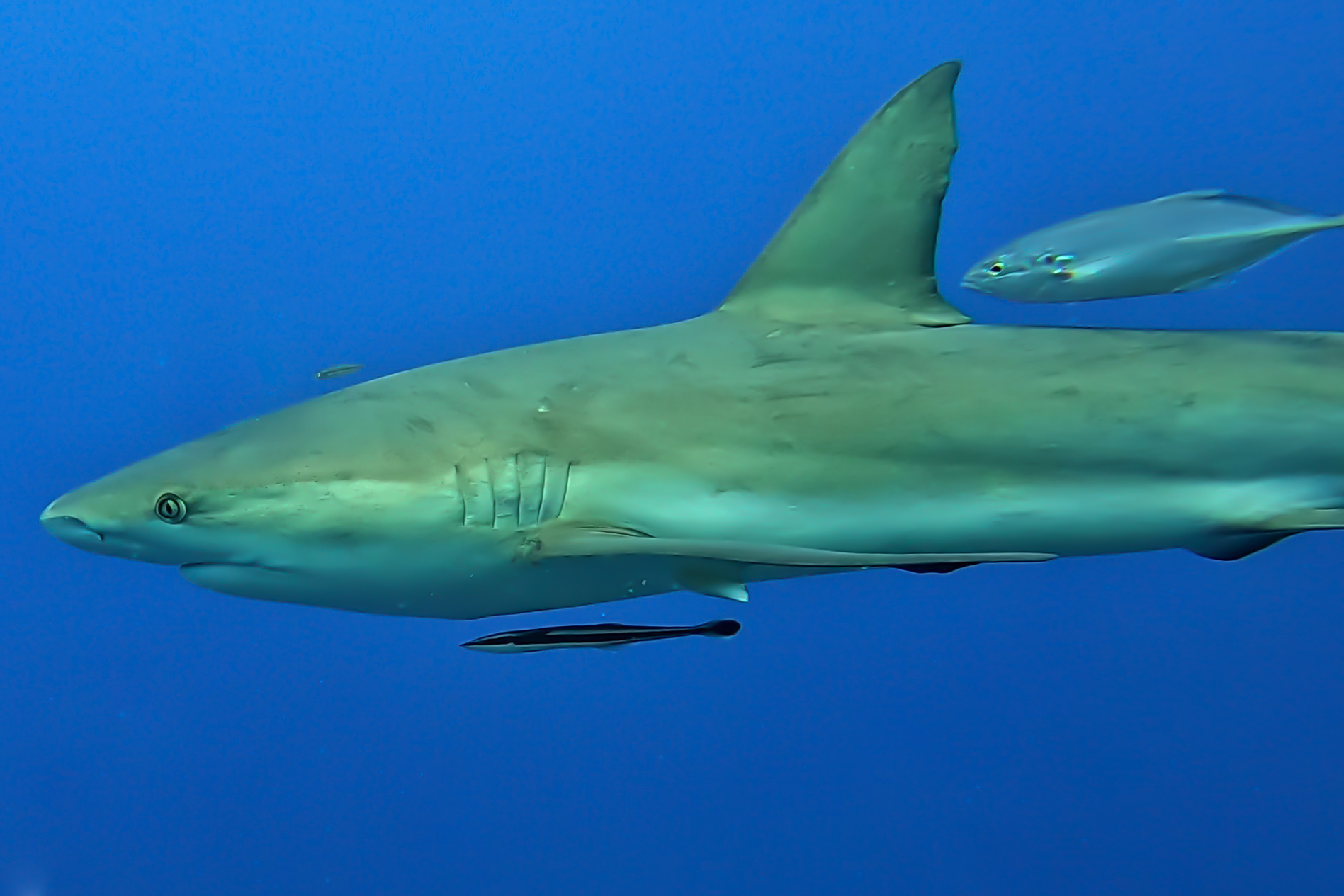
Excellent! Thanks for sharing the trip and all the effort that went into.
One of our best trips ever. Loved your Lightroom trainings. Such a memorable time for us and now we have the pics and videos to prove it. Thanks!
Great job !
Thanks, Will. Great time diving with you.
Thanks Cindy and Hank for sharing with us your photo essay. Brings back memories of our trip with you!
Congratulations, Iron Woman!
Unbelievable trip and photos. Such an experience. Loved it all.
My heart, eyes and ears are travelling with you on this blog. Love all the pictures and video! Makes everything more concrete. Lovely of you to work so hard at bringing us along. I’ll watch for the next one!
Like they say, you should have been there. So happy we could bring you along in spirit. The sharks and that stingray filming were unBelizeable!
What a spectacular trip!!
Scott & Shannon, and Kristen & Matt just went to Belize as well! They did not do nearly the amount of diving you did, but still had some great dives. I think they must have just returned to the US, when you both went. Too funny!
I am totally LOVING the pictures and details Cindy!!! I am so happy to see this trip posting!
It’s a long trip (boat ride) to the best dive sites and it can be rough seas. Being on that dive boat was the perfect way to go. Great dive buddies from all over the US.
Kent
Awesome recap, thanks for sharing this!
Wow this is a really amazing blog! Well done! Great recap of the trip!